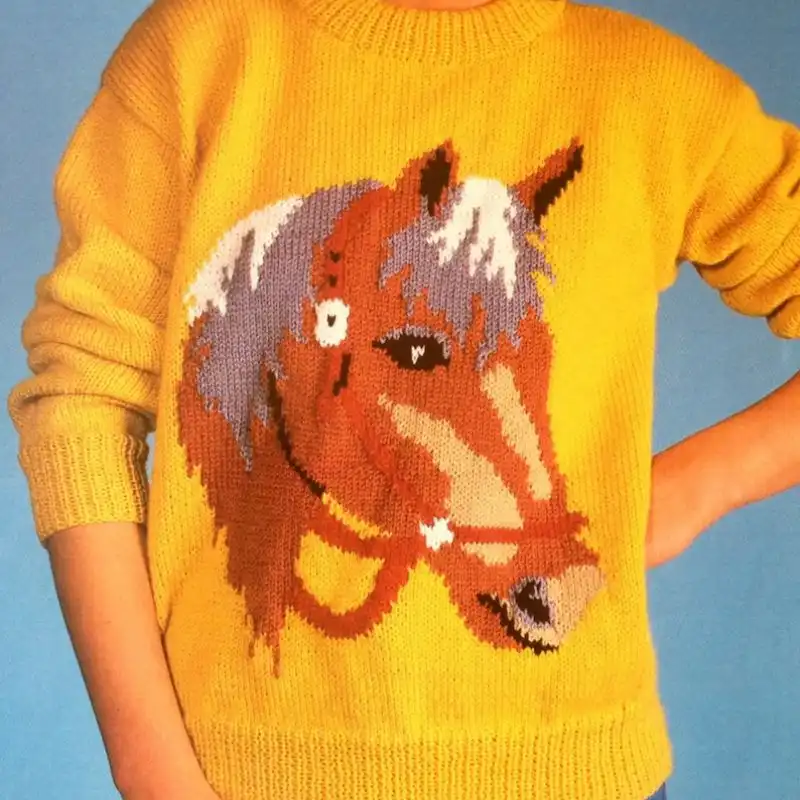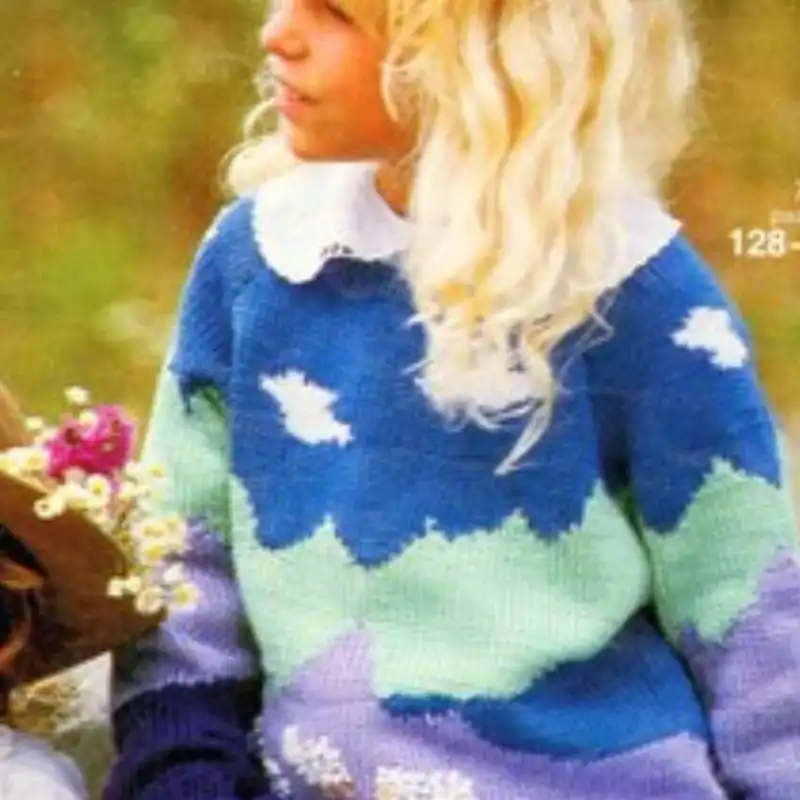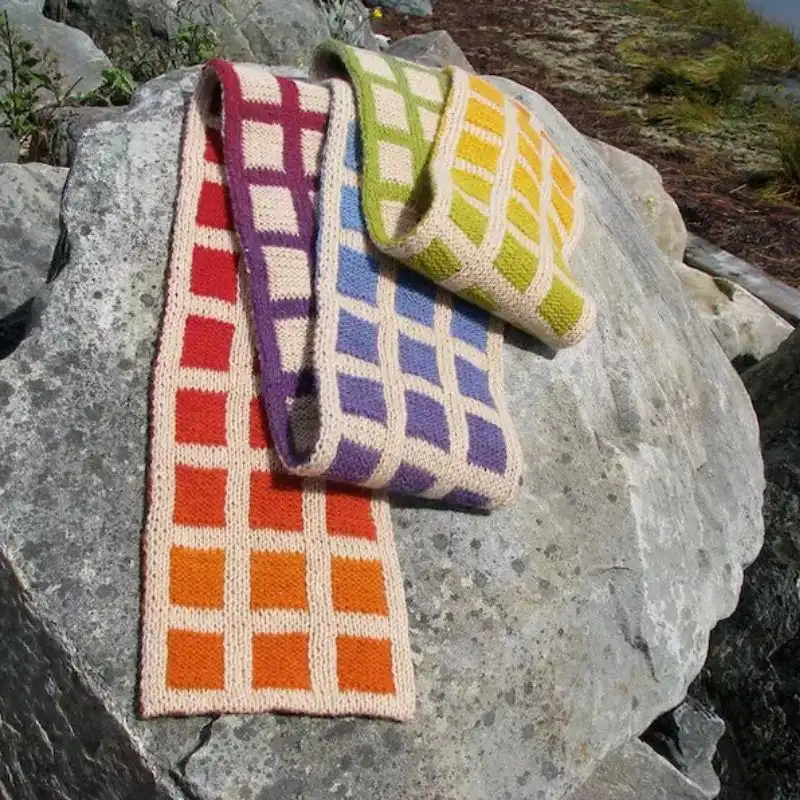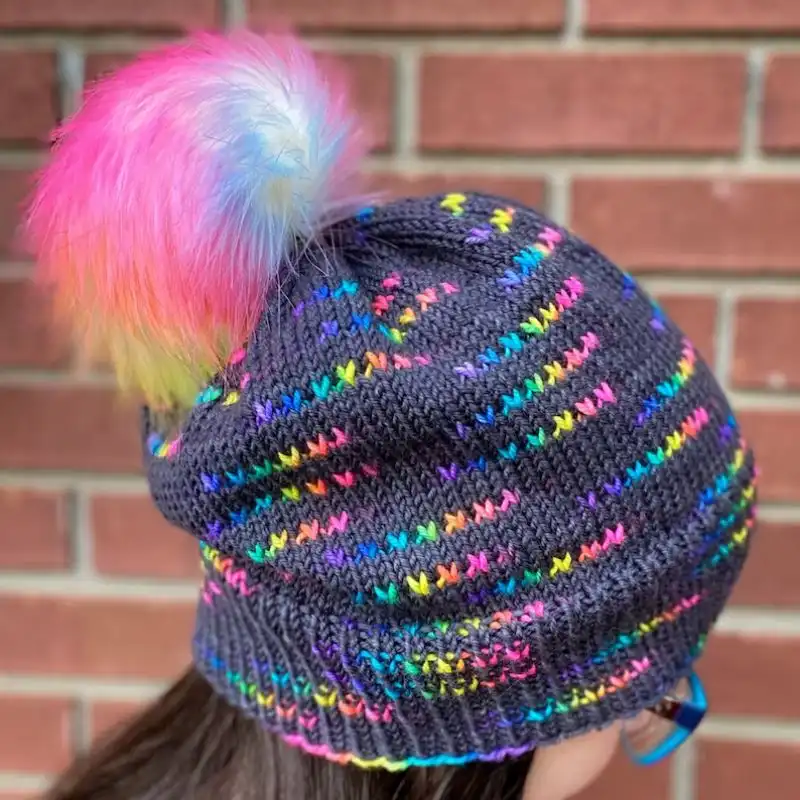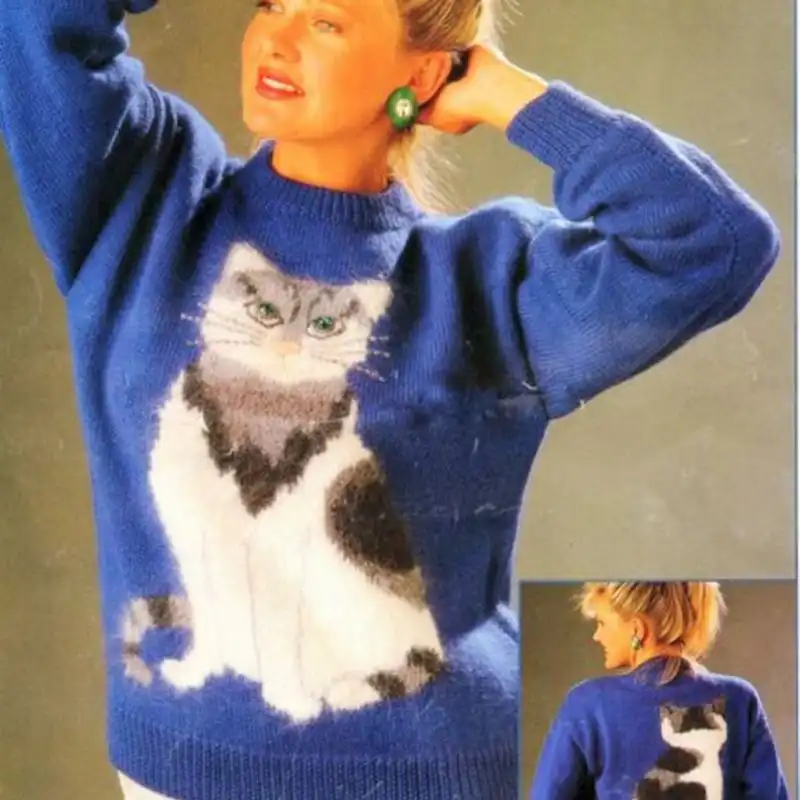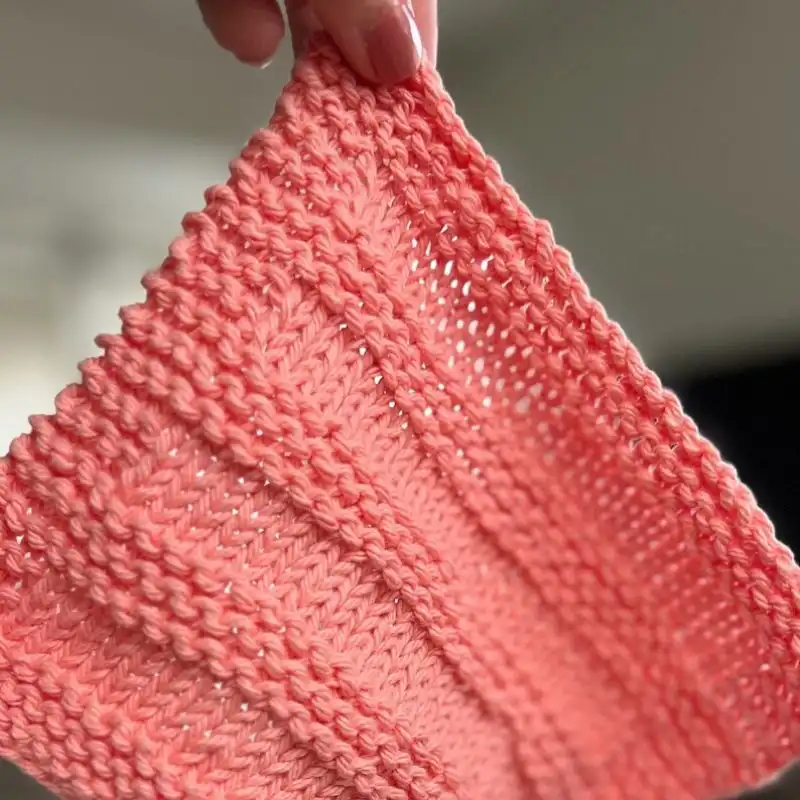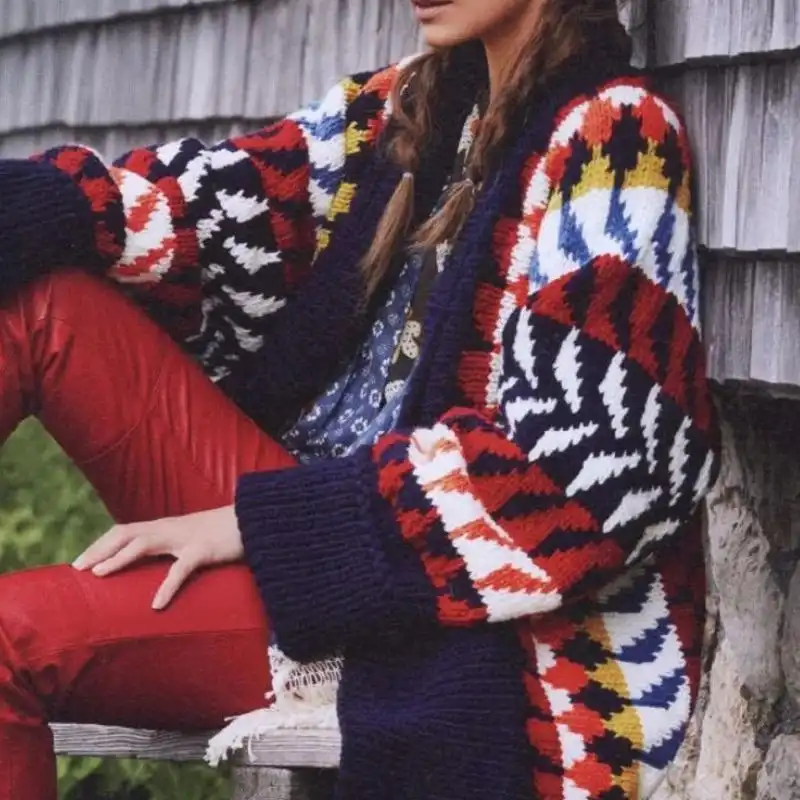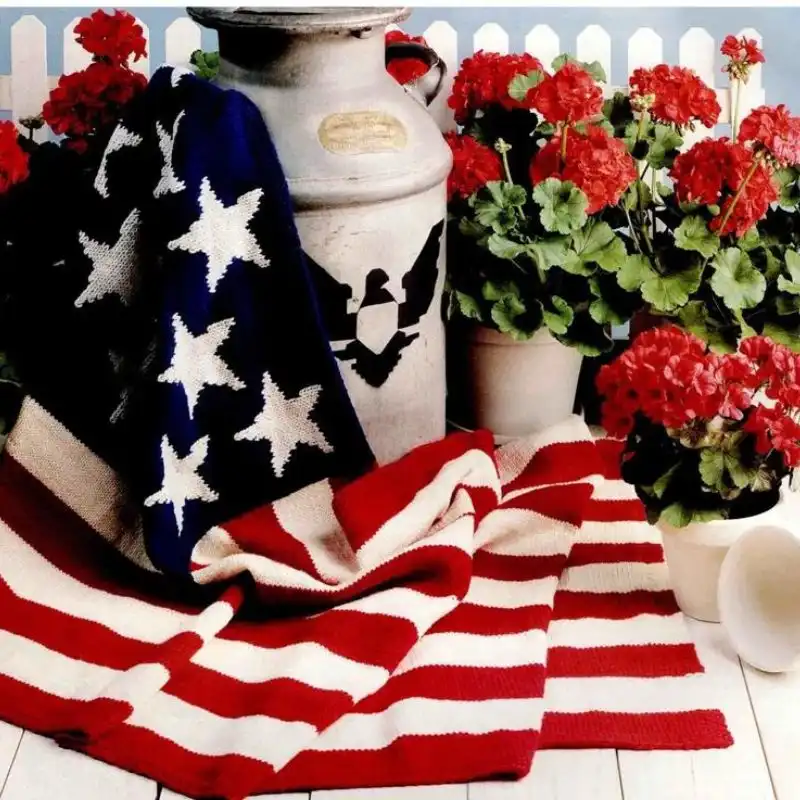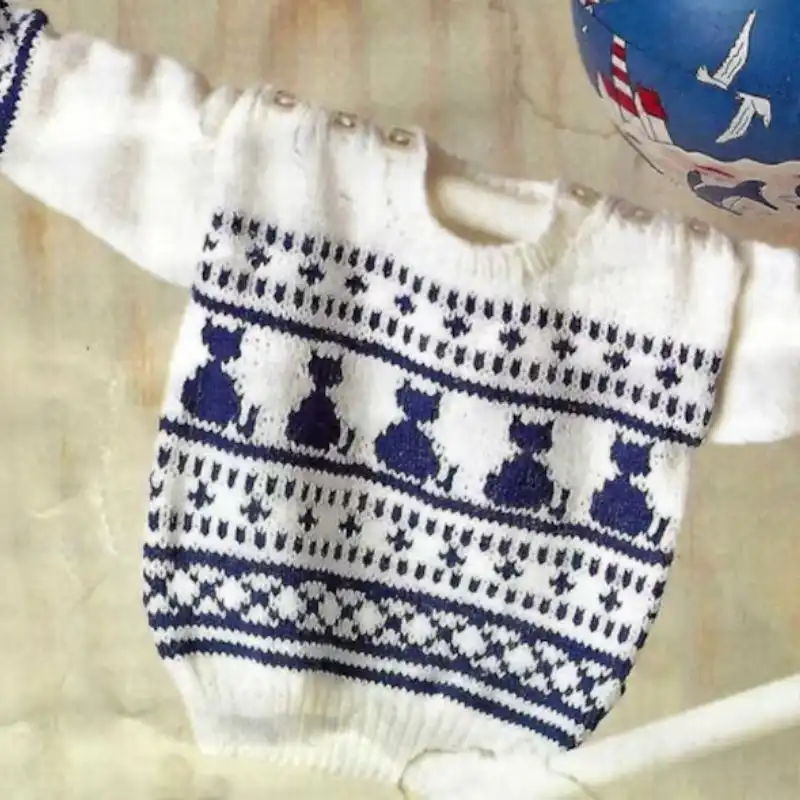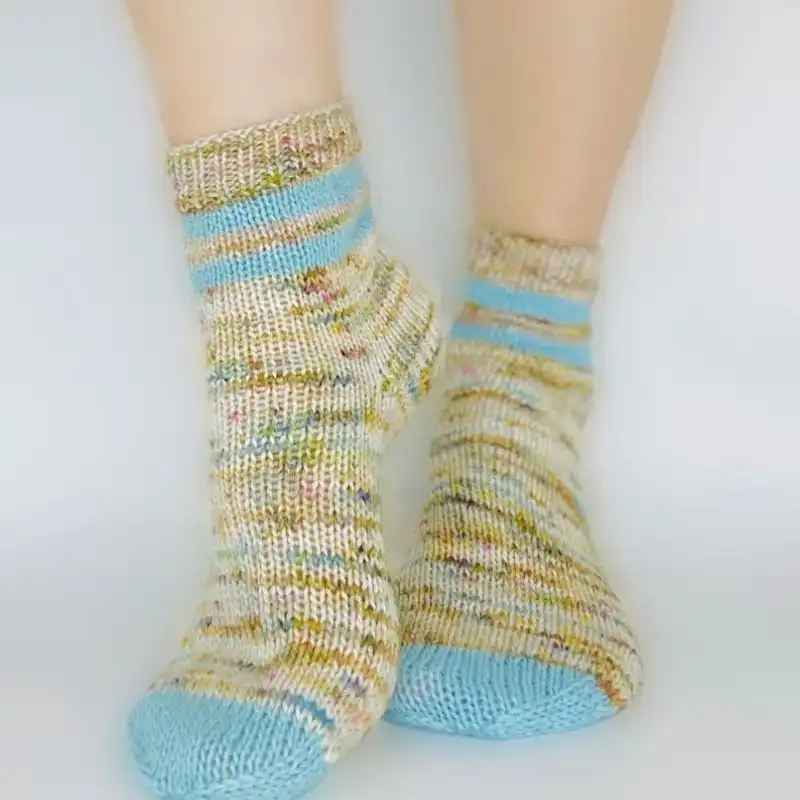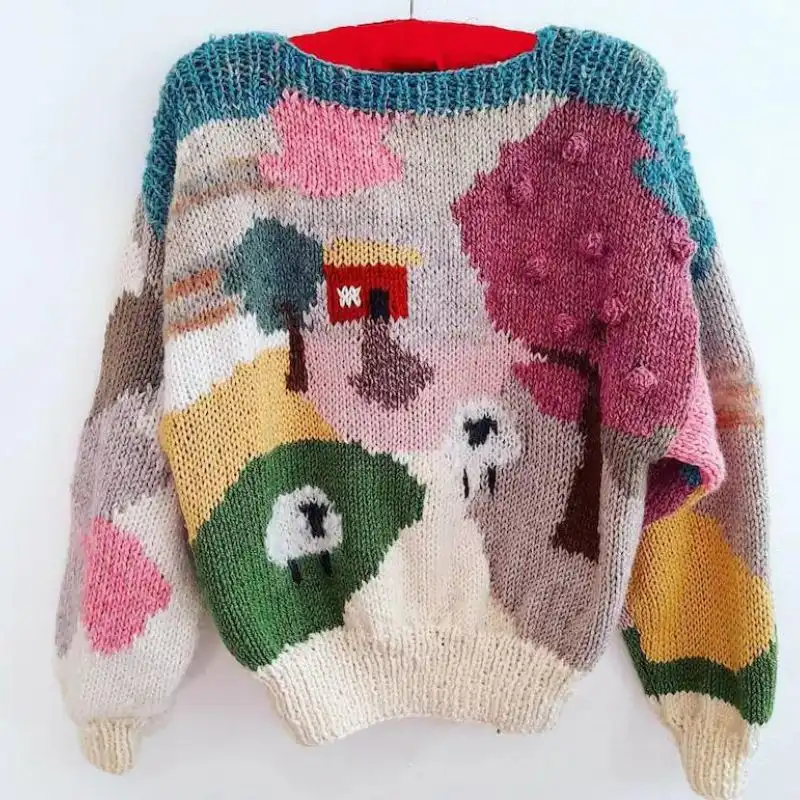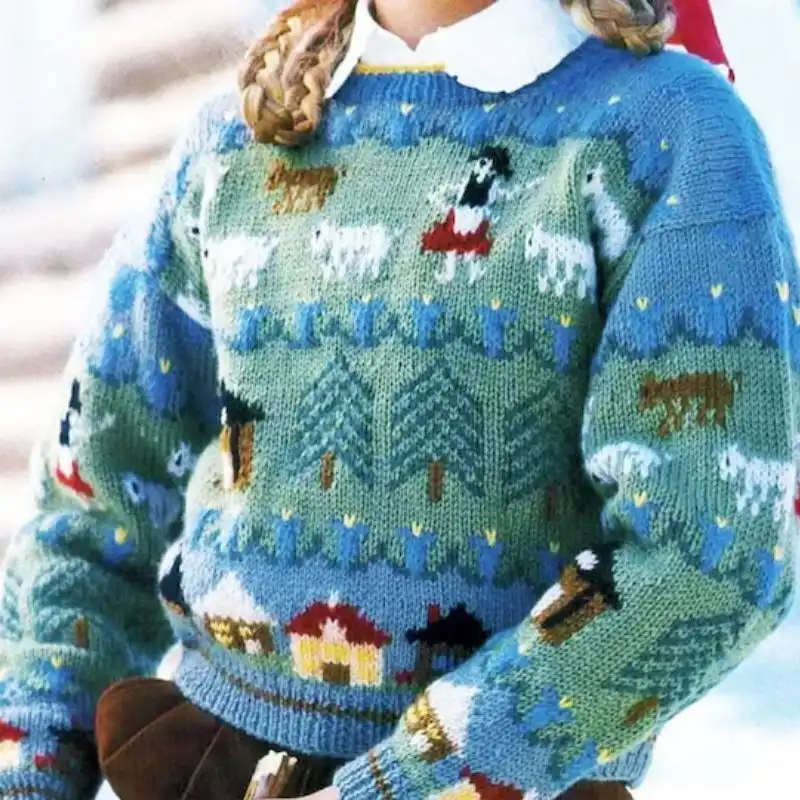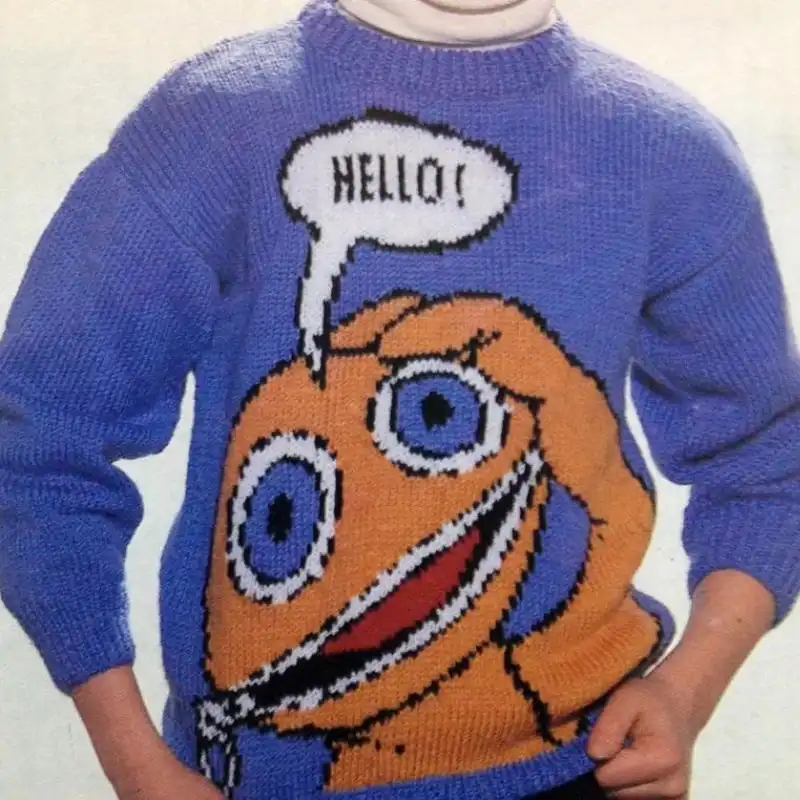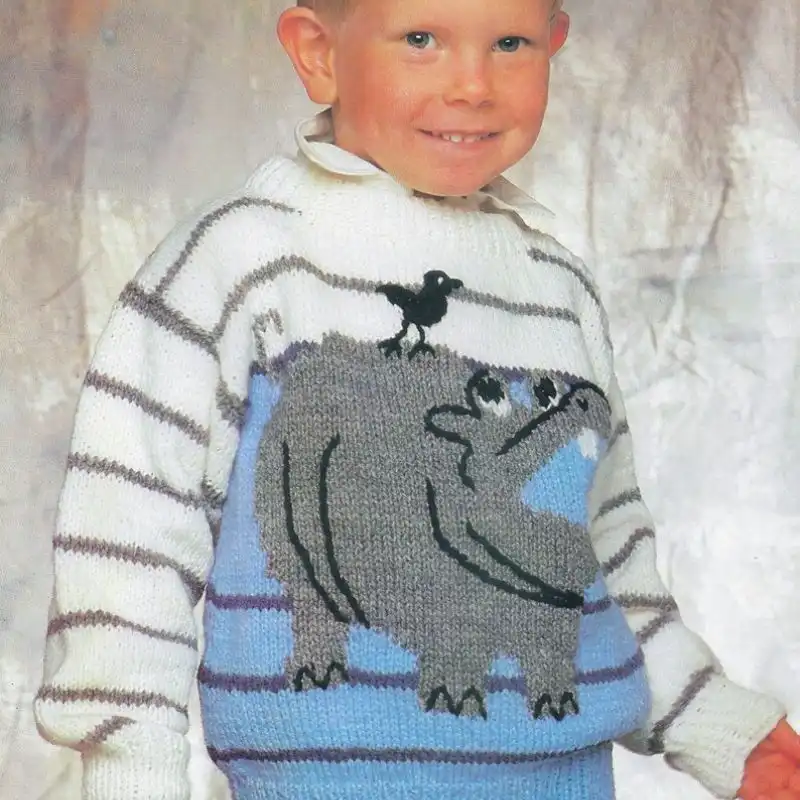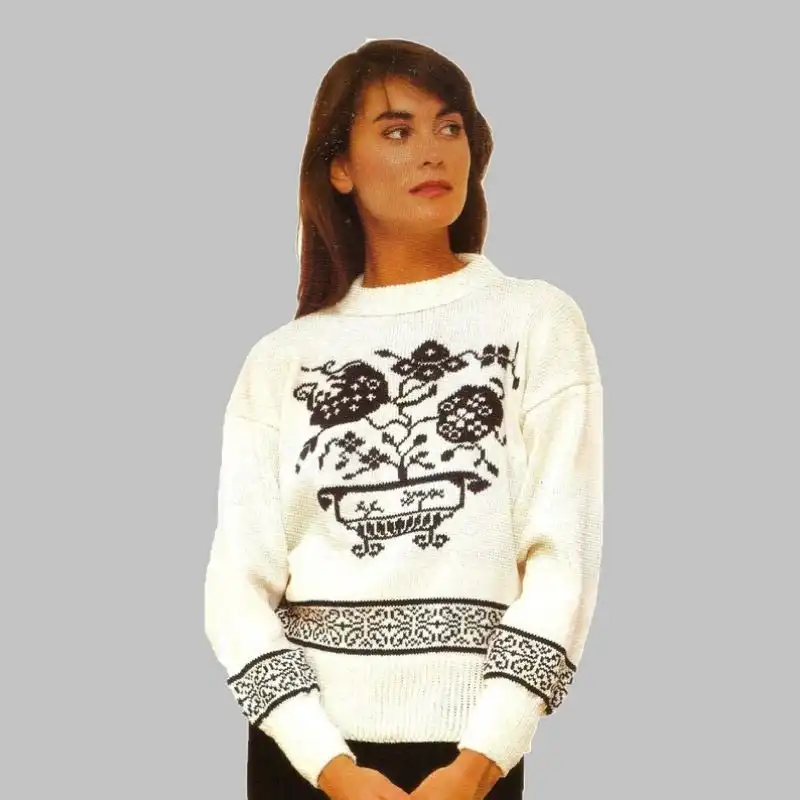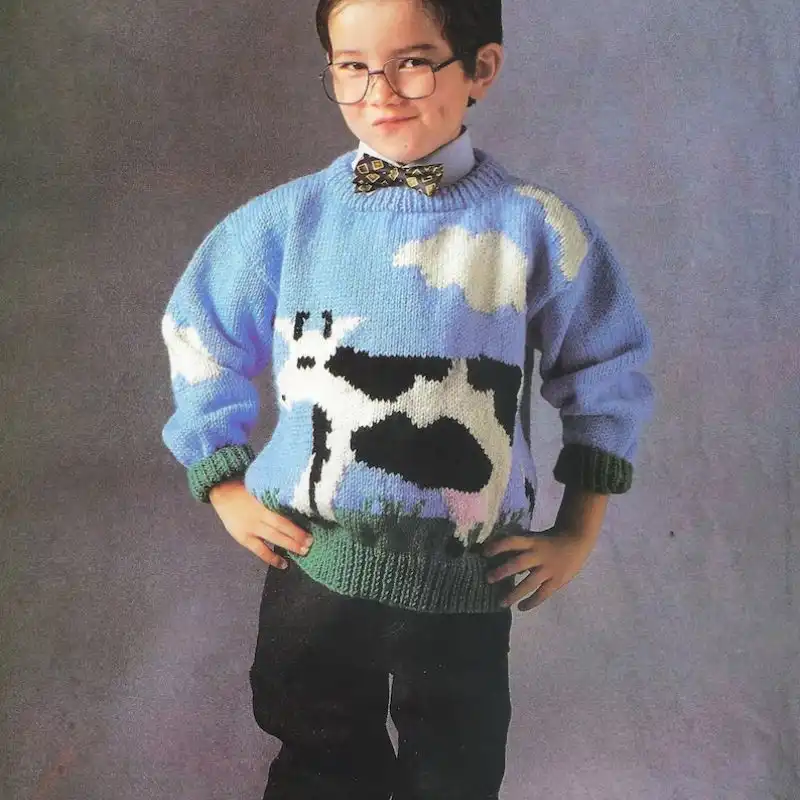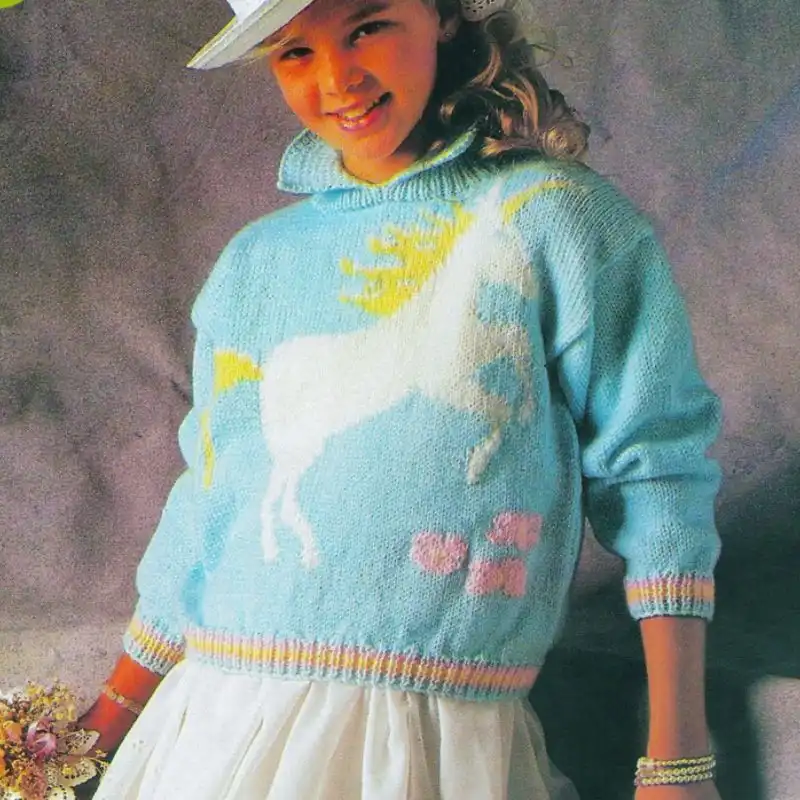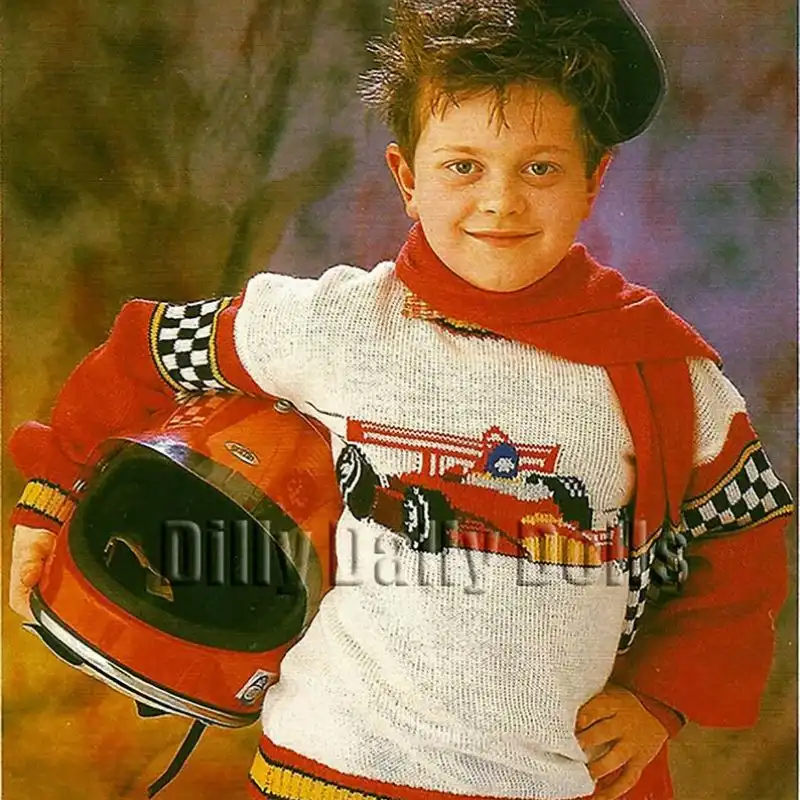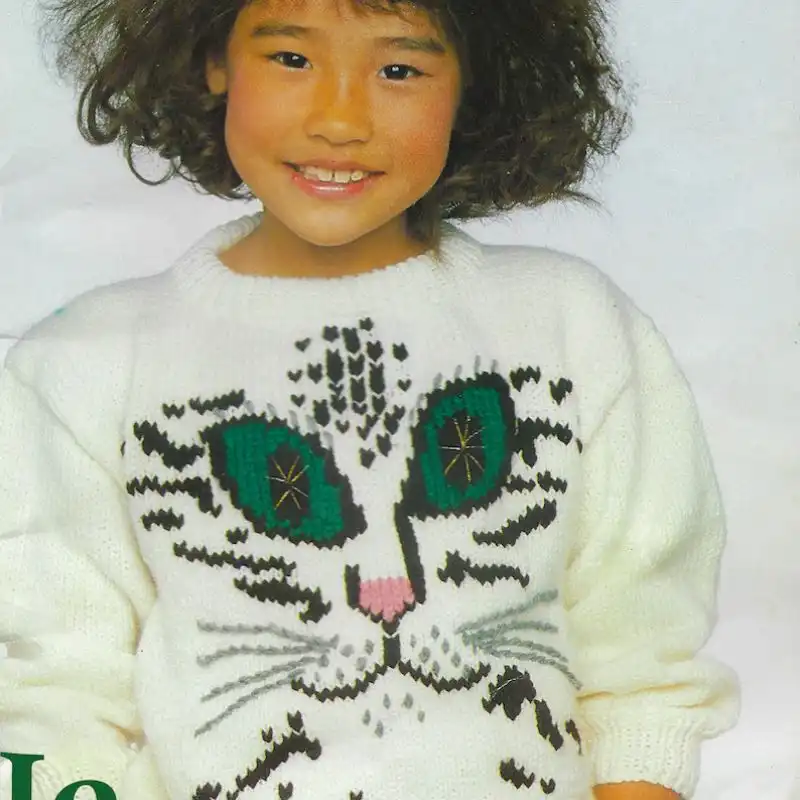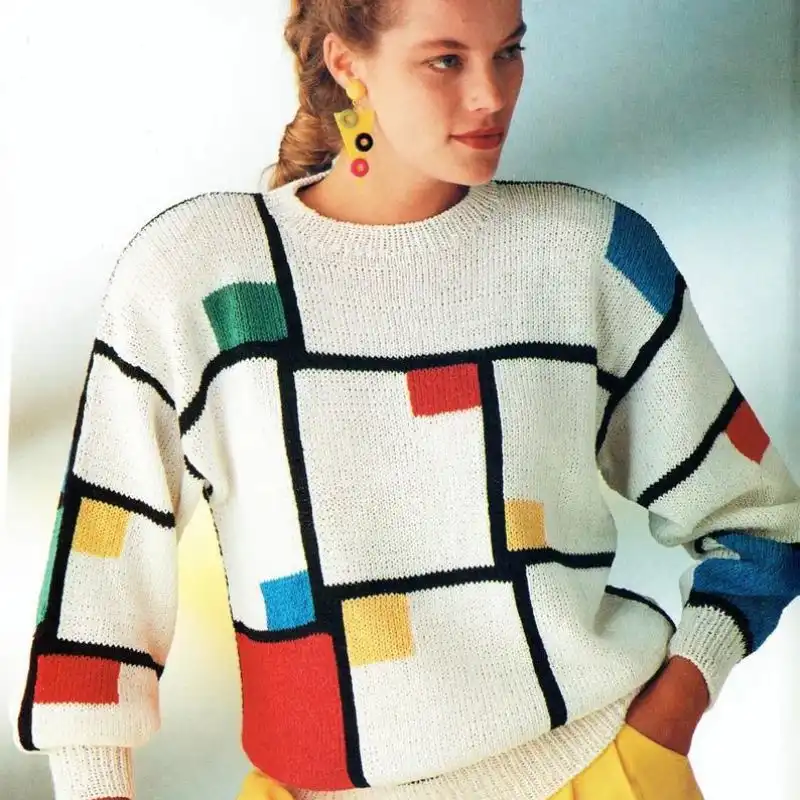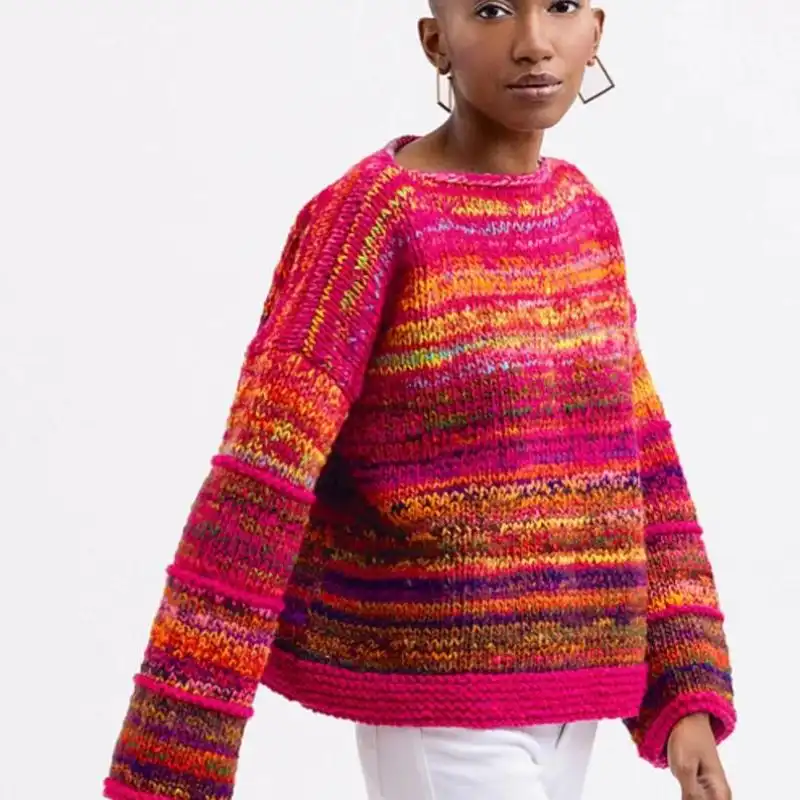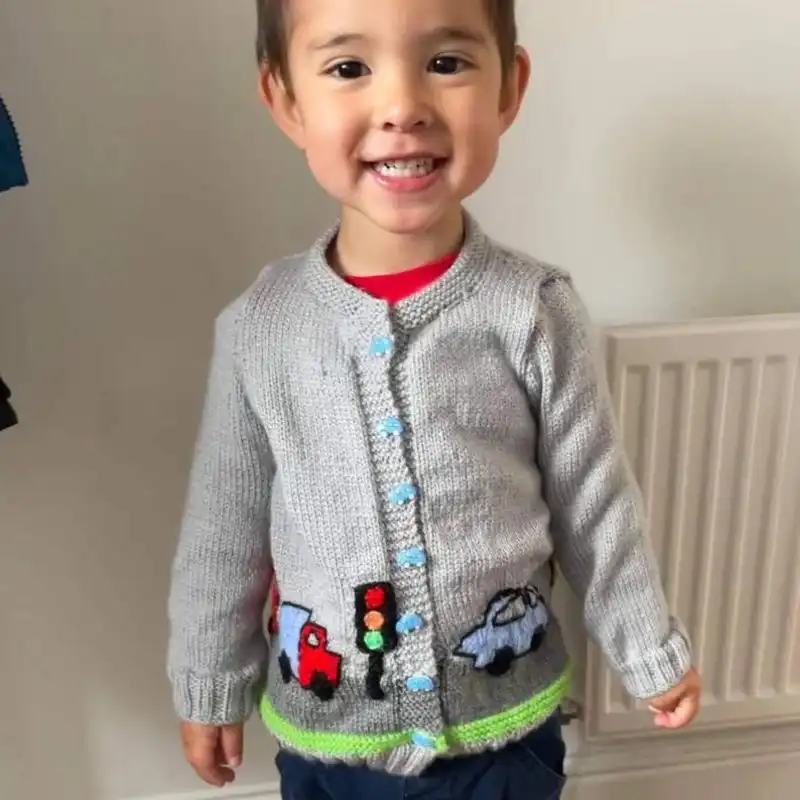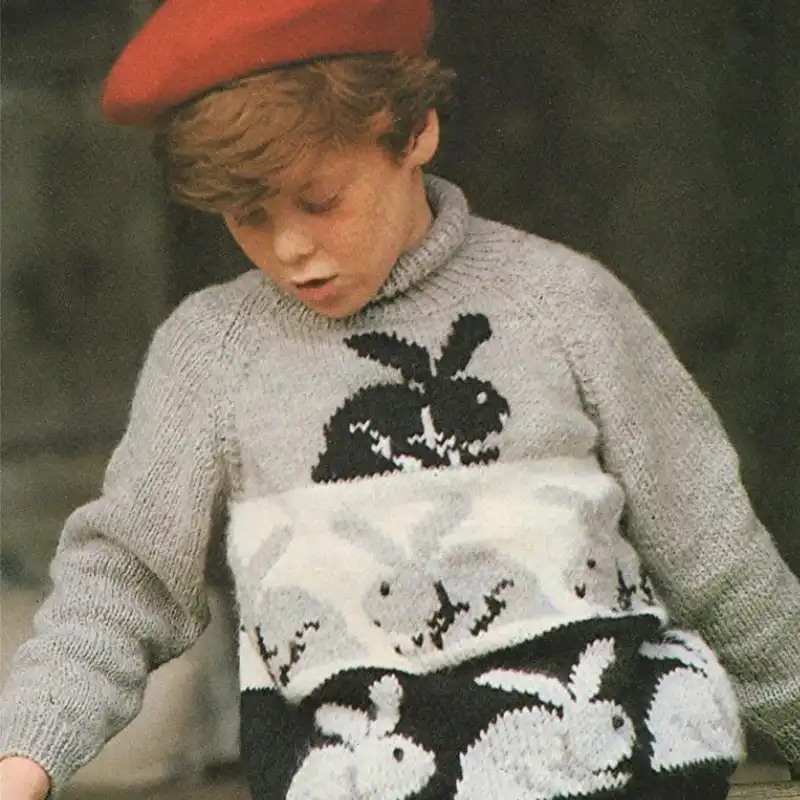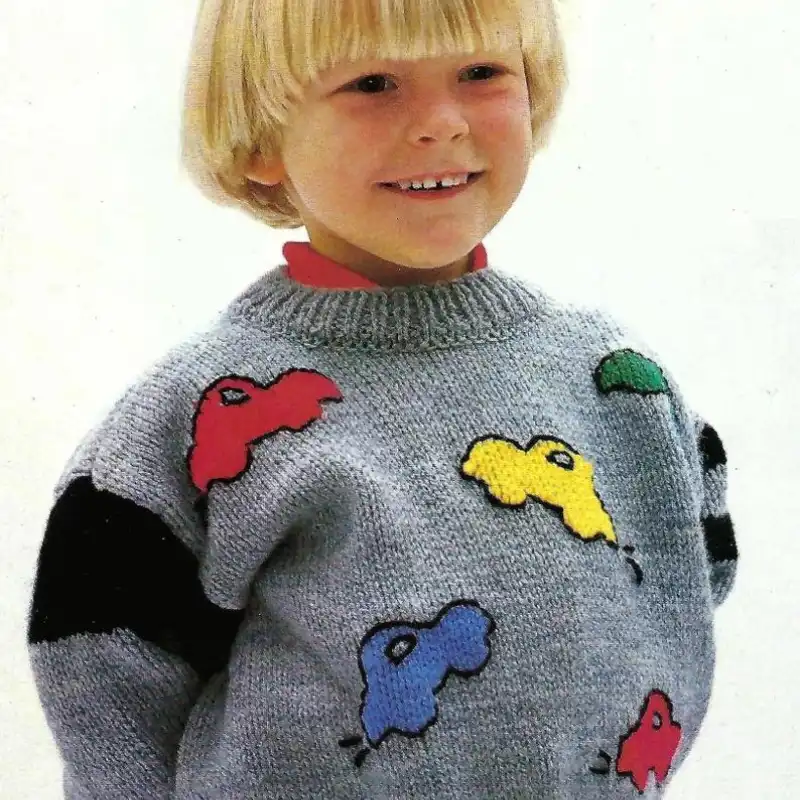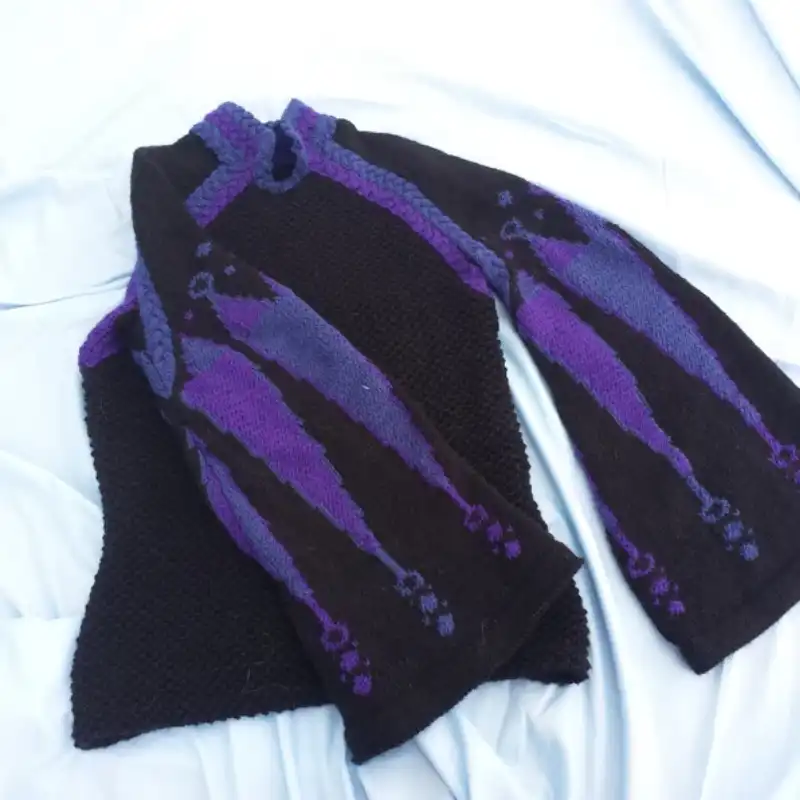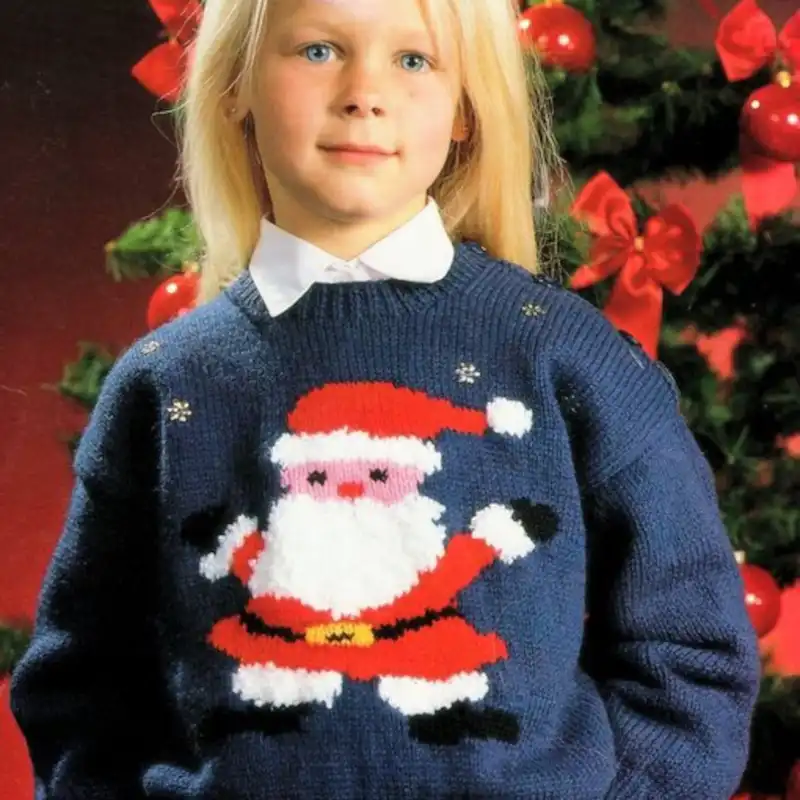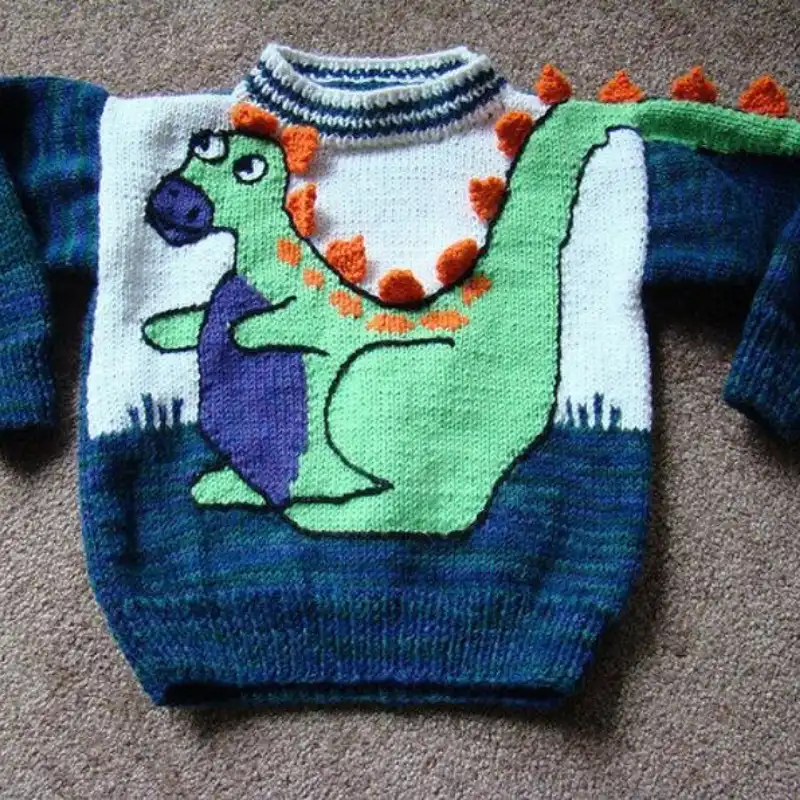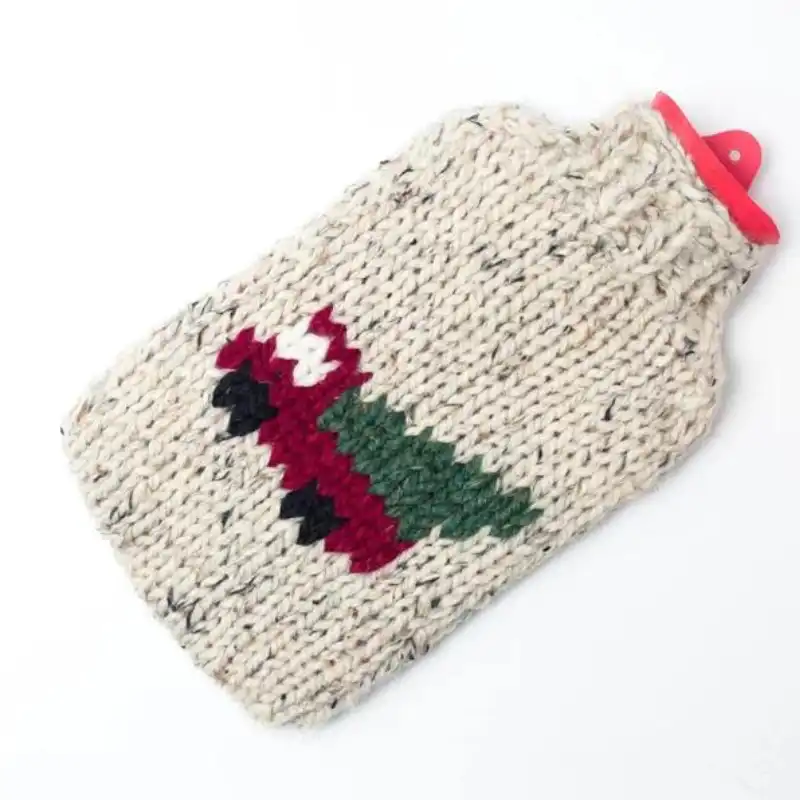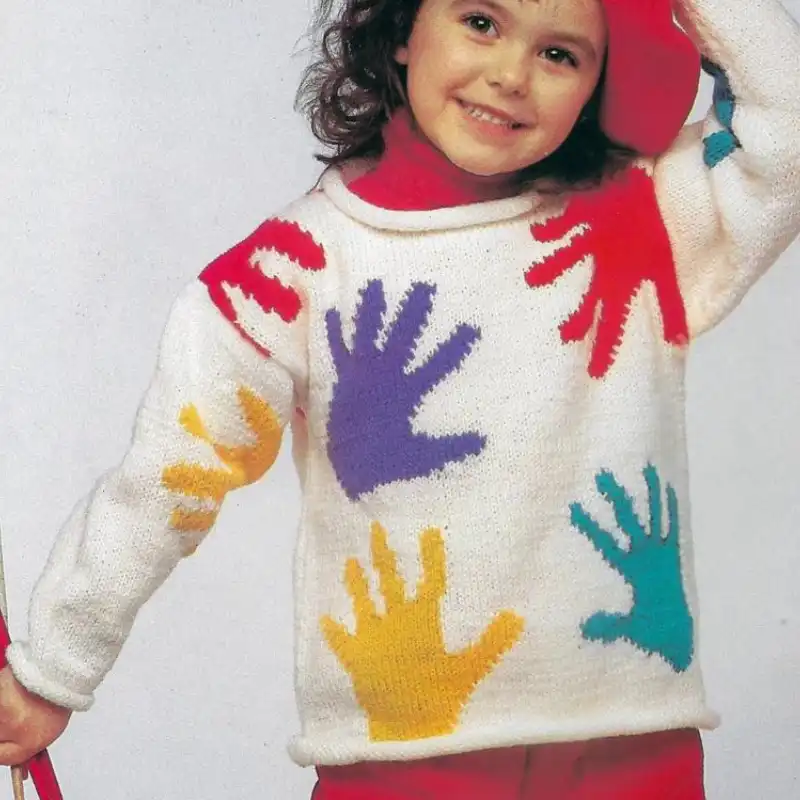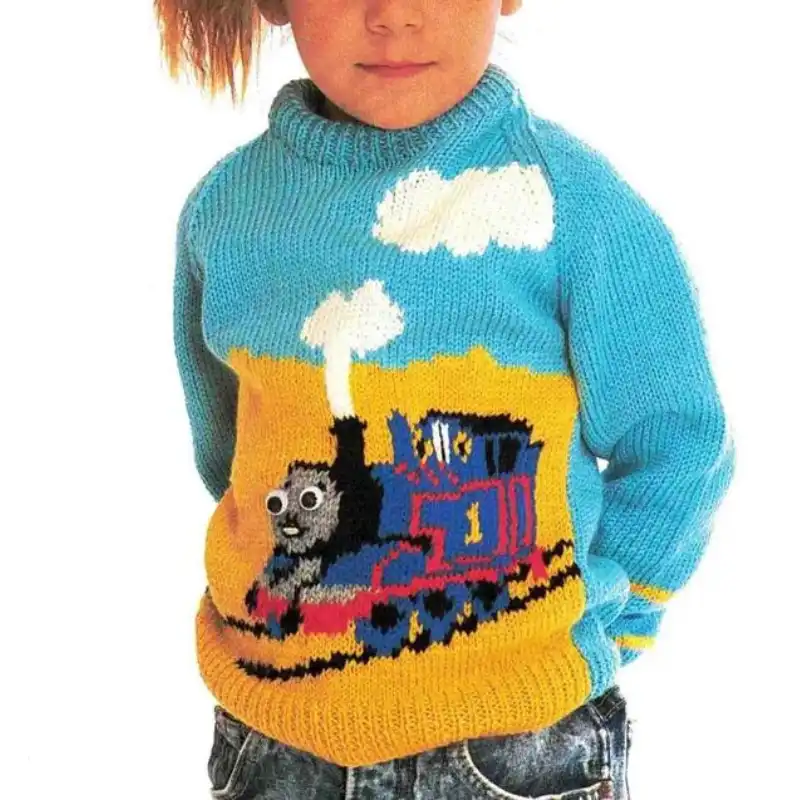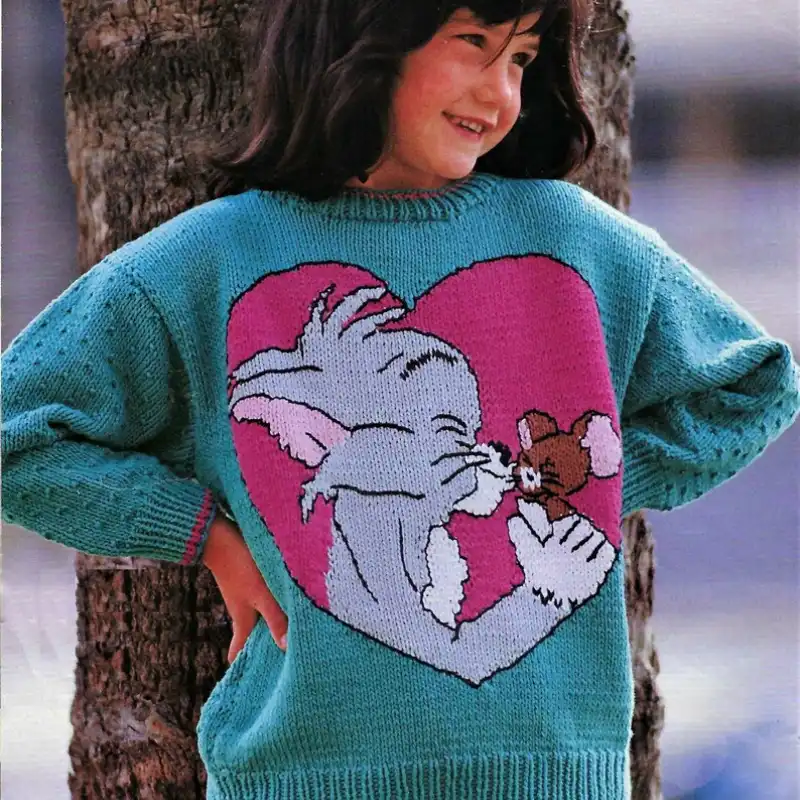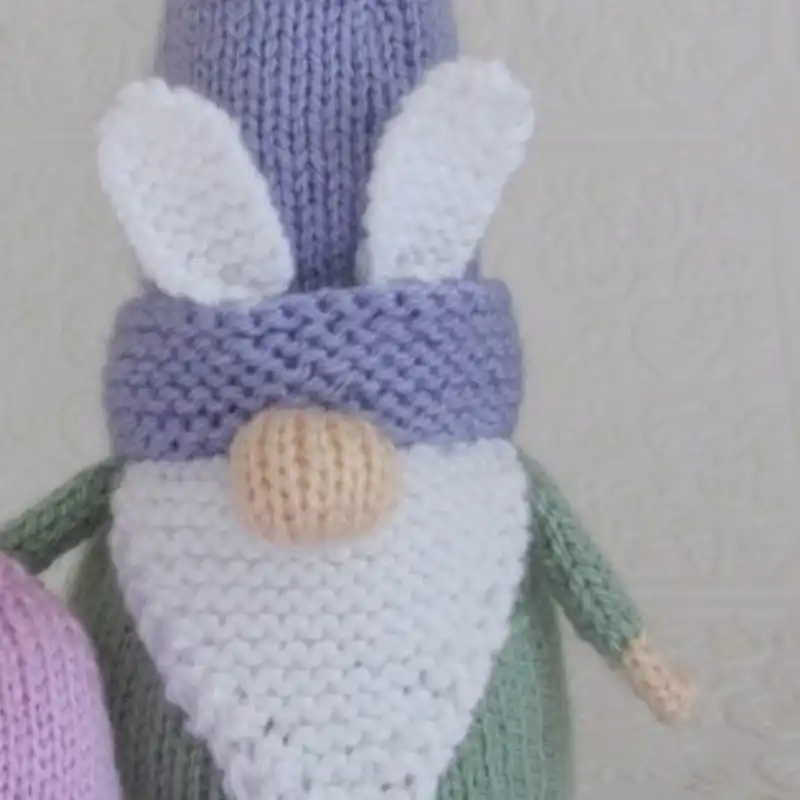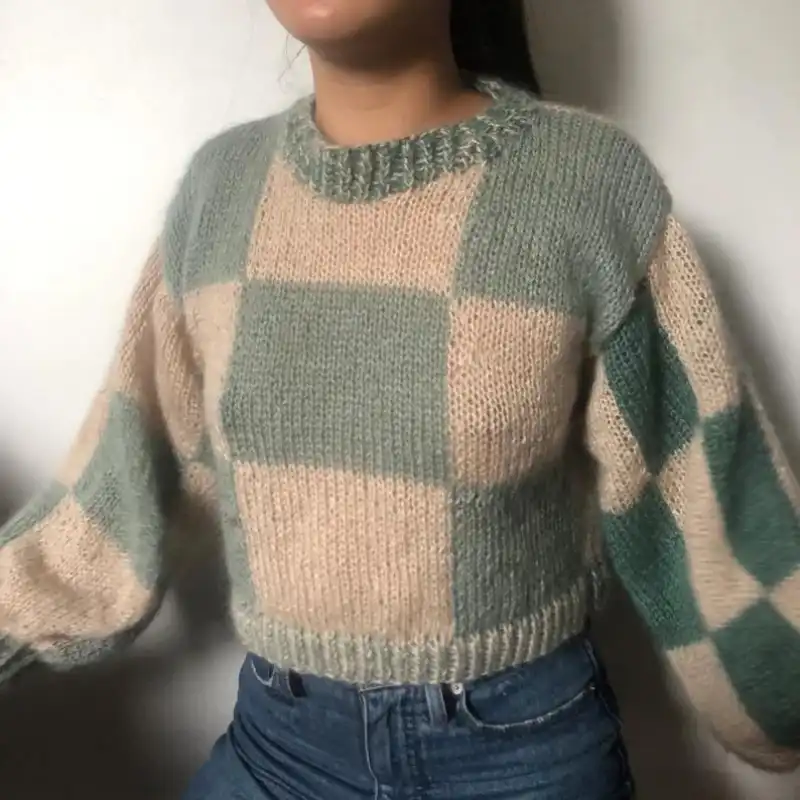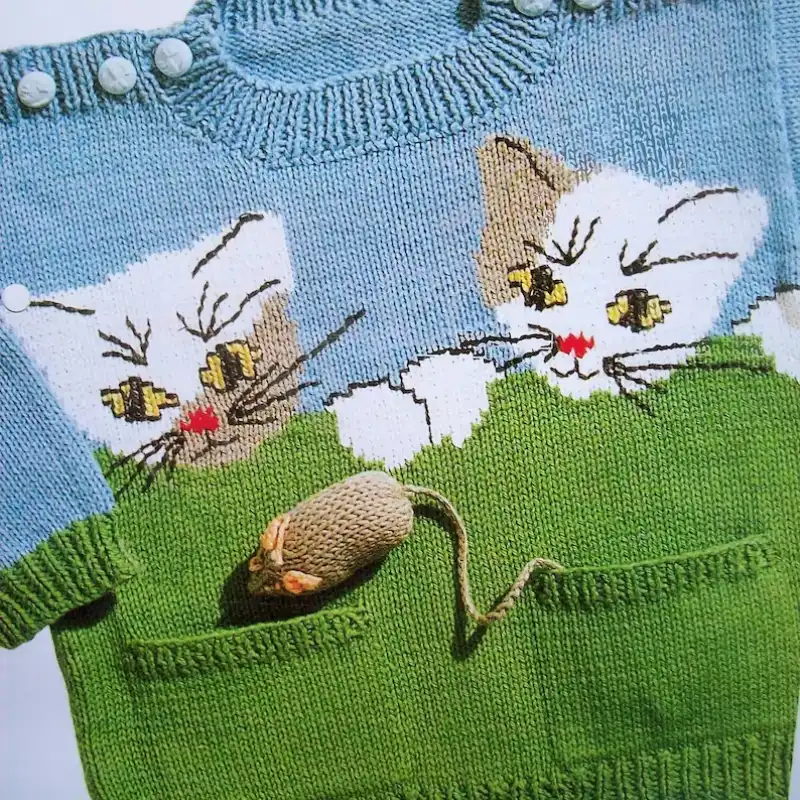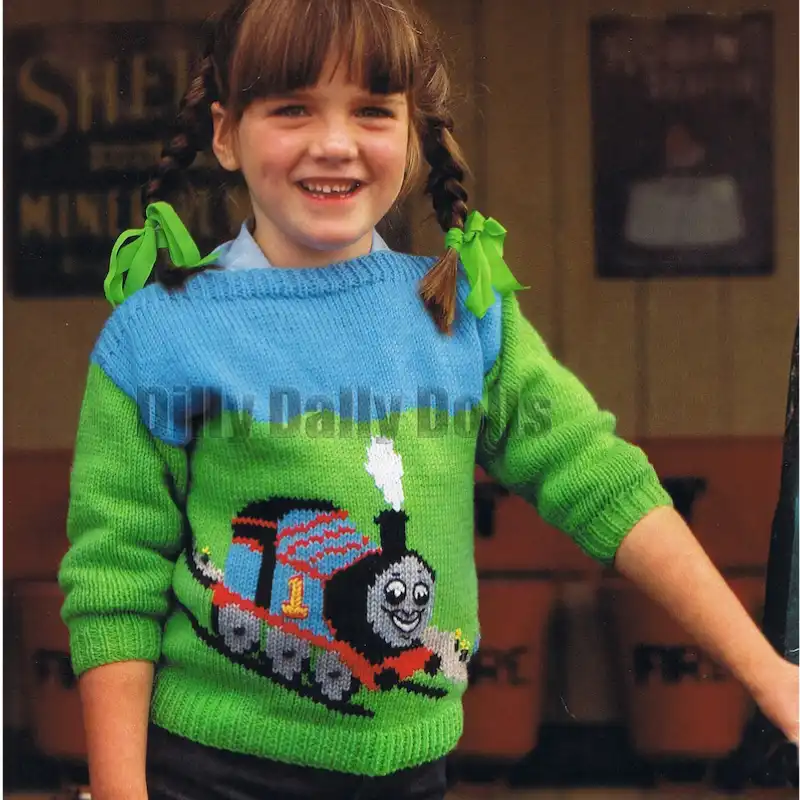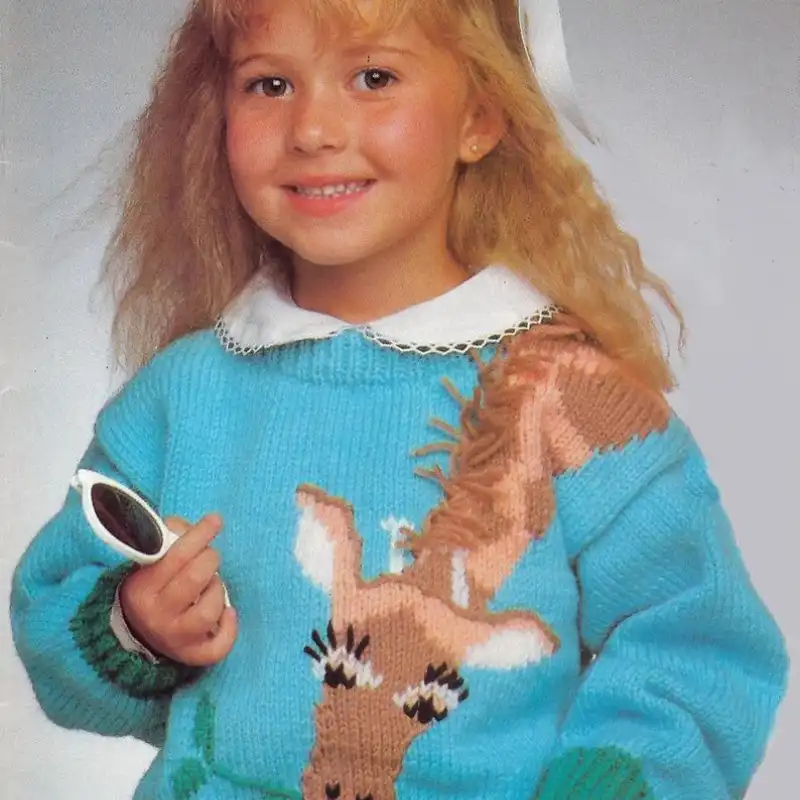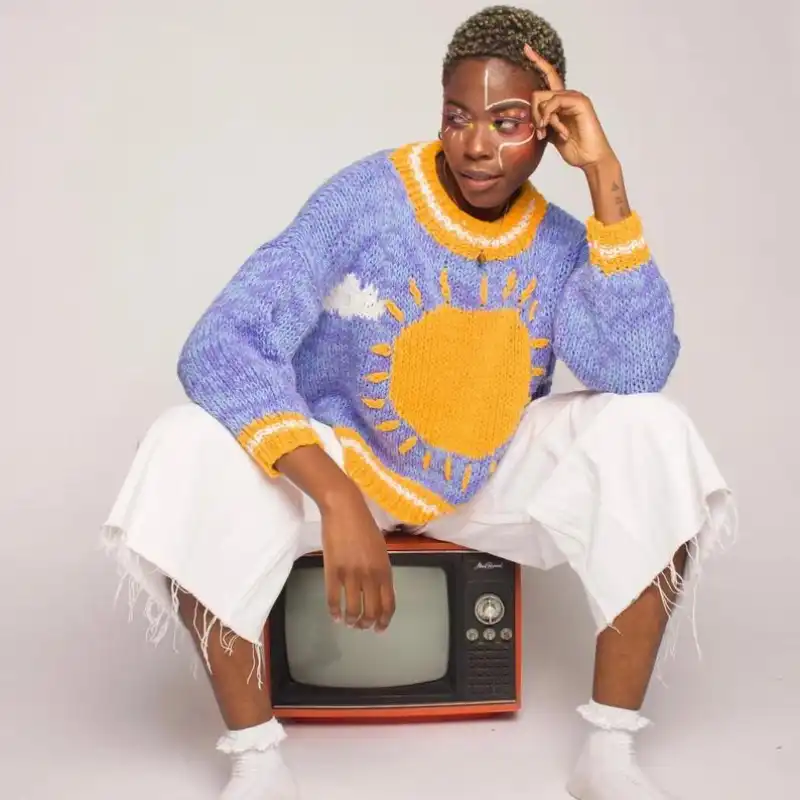Have you ever felt the tug of yarn between your fingers, only to find your creativity stifled by mundane patterns? That’s the knitter’s dilemma. But here’s a secret: Intarsia is one of the best ways to blend color with craft, turning simple yarn into stunning art.

As an expert knitter, I’ve discovered that the most outstanding advantages come from exploring the endless possibilities of Intarsia knitting patterns.
Dive into the world of Intarsia with me. With 43 patterns, you’ll unlock a great way to express your artistry. These top picks are not just designs; they’re your best bet for a creativity boost. Intarsia is one of the easiest techniques to master and one of the simplest ways to add flair to your work. All you need are your needles, yarn, and a dash of whimsy.
My curated collection of patterns is your gateway to becoming the artist of your wardrobe. You’ll never see knitting the same way again as we resolve issues and solve problems stitch by stitch together.
What Is Intarsia Knitting?
Intarsia knitting is a fascinating and colorful technique for creating patterns with multiple colors. As an expert knitter, I think of Intarsia as painting with yarn. You work with blocks of color, adding them to the project as you go along.
Unlike other colorwork techniques, like fair isle or stranded knitting, where you carry the yarn across the back of the work, each color block has its strand or bobbin of yarn in Intarsia.
This method avoids the floats on the back side and allows for much larger and more complex color designs, making it one of the best ways to create detailed images or patterns within your knitting.
One of the most significant advantages of Intarsia is that it allows for a cleaner, flatter finish, perfect for items like blankets or garments where both sides are visible. It’s also one of the most effective ways to control your yarn in colorwork knitting, preventing the puckering that can happen with other techniques.
First, you simply drop one color and pick up the next, twisting the yarns together at the join to prevent holes. Once mastered, it’s the best bet for anyone looking to add a personal touch to their projects—the easiest way to knit a picture into your work.
Basics Of Intarsia Knitting
Intarsia knitting offers a multitude of benefits for knitters looking to expand their skill set and express their creativity:
- Intricate Design Possibilities: One of the most significant advantages of Intarsia is the ability to create detailed, picture-like designs within your knitting projects.
- No Carrying Yarn Across: Since each color section uses a separate piece of yarn, you won’t need to carry yarn across the back of the work, making for cleaner, neater fabric, which is excellent for projects where both sides are visible.
- Customization: Intarsia is one of the best ways to personalize projects. You can quickly adapt patterns to include initials, motifs, or even replicate images, making your knitting unique.
- Versatility: It’s an excellent option for knitting items with large blocks of color, such as blankets, sweaters, or cushions.
- Flat, Non-Bulky Fabric: One of the simplest benefits of Intarsia is the flat fabric it creates without the bulk that can come from other colorwork methods that carry yarns behind the work.
- Use Of Multiple Colors: With Intarsia, you can use many colors in a single row, one of the easiest ways to incorporate a broad color palette into your knitting.
- Avoids Tangles: Since you’re using different strands for each color block, it’s the easiest way to avoid tangles and the frustration of long yarn floats.
- Skill Advancement: It’s one of the simplest methods to level up your knitting game, as it challenges you to learn new techniques and improve your craft.
- Economic On Yarn: It’s a great way to use leftover yarn because you can add small amounts of different colors without purchasing new material.
- Stress Relief: Many knitters find the process of Intarsia knitting to be an effective form of mindfulness and stress relief. It focuses on color changes and intricate patterns.
- Portability: Since you work with small bobbins or yarn butterflies, Intarsia projects can be more portable than those requiring multiple large skeins of yarn.
- No Limit On Width: Unlike stranded knitting, there’s no limit on the width of a color block, so you can knit large areas without worrying about the stretch of the fabric.
RELATED: 25 Chunky & Giant Blanket Knitting Kits To Knit Your Way To Warmth
Popularity And Versatility Of Intarsia Knitting
Intarsia knitting has enjoyed waves of popularity over the years, particularly when knitters want to add a bespoke or artistic touch to their work. This technique’s versatility is central to its enduring appeal.
Unlike stranded knitting, which is well-suited to patterns that repeat across a fabric, Intarsia shines when the goal is to create large, distinct blocks of color—think bold geometric shapes, whimsical characters, or even intricate landscapes.
Its versatility is evident in the range of projects suited to Intarsia. It’s been embraced in everything from cozy winter sweaters with striking motifs to lightweight summer vests featuring bold graphic designs.
Intarsia motifs can be found adorning accessories like bags and hats or adding a personal touch to home decor items such as cushions and throws.
Moreover, the versatility of Intarsia extends to the types of yarn used. While it can be done with nearly any yarn weight or type, the method allows for strategically placing varied textures and yarn blends within a single project, further expanding the creative possibilities.
In fashion and design, Intarsia has been a technique for designers looking to inject a unique flair into their collections. High-end fashion often showcases Intarsia’s ability to create detailed, statement-making pieces that stand out on the runway.
The popularity of Intarsia also owes much to the social and digital age. Online communities and platforms provide endless inspiration and support, with knitters of all levels sharing their Intarsia triumphs and challenges.
Social media has allowed for a resurgence of interest as images of Intarsia projects easily garner attention and admiration, inspiring others to try their hand at the technique.
Various Stitches For Intarsia Knitting
Intarsia knitting isn’t so much about using different stitches as it is about the technique of color changing. However, to successfully execute Intarsia, you’ll need to be comfortable with several basic knitting techniques and stitches:
- Knit Stitch: The most basic knitting stitch, creating a smooth ‘V’ shape on the right side of the fabric. It is the primary stitch used in Intarsia knitting.
- Purl Stitch: The inverse of the knit stitch, creating a bumpy texture on the right side of the fabric. Purl stitches are often used on the wrong side of flat pieces in Intarsia to maintain a smooth front surface.
- Twisting Yarns: When changing colors in Intarsia, you must twist the yarns around each other at the back of the work to prevent holes. It isn’t a stitch per se, but it’s a crucial technique to know.
- Crossing Yarns: Similar to twisting, when you change colors, you’ll cross the old color over the new one to lock the yarns together at the color change.
- Weaving In Ends: Given the number of yarn changes in Intarsia, there will be many ends to weave in. Doing this neatly is crucial for a professional-looking finish.
- Bobbin Management: Although not a stitch, managing the separate bobbins or butterflies of yarn to prevent tangling is essential in Intarsia knitting.
- Edge Stitches: Often, Intarsia is worked in stockinette stitch, which can curl at the edges. Knowing how to create a neat selvage edge can help stabilize the fabric.
- Blocking: Again, not a stitch, but wetting or steaming your finished piece and laying it out to dry so that all the stitches even out and the piece lays flat, which is very important in Intarsia for the cleanest look.
Essential Tools And Materials
For intarsia knitting, you’ll need specific tools and materials to manage the colorwork effectively. Here’s a list of essentials:
- Yarn: Choose yarns in various colors according to your pattern. It’s best to use yarns of the same weight to ensure even knitting, although mixing textures can be creative.
- Knitting Needles: Suitable needles for the weight of your yarn—usually straight or circular needles, depending on the size of your project.
- Bobbins: Small tools on which you can wind your different colored yarns to keep them organized and prevent tangling.
- Yarn Needles: For weaving in ends, which you will have more of in Intarsia than in other types of knitting.
- Scissors: To cut yarn when changing colors or finishing a section.
- Stitch Markers: This helps mark the beginning of a color change or note significant places in your pattern.
- Pattern: An intarsia chart or written pattern indicating where to switch colors.
- Tapestry Needle: A blunt needle for weaving in ends once your project is complete.
- Sticky Notes Or Highlighter Tape: To keep track of your place on the chart or pattern.
- Row Counter: Useful for keeping track of where you are, especially if your pattern involves shaping within the Intarsia.
- Blocking Tools: Mats, pins, and perhaps a measuring tape for blocking your finished piece into the correct shape and size.
- Tension Keeper: Some knitters use a tension keeper to maintain even tension on their yarn, which can be particularly helpful with the multiple strands used in Intarsia.
Abbreviations For Intarsia Knitting
Intarsia knitting primarily uses standard abbreviations, as the technique is more about color changes than unique stitches. However, when working with an Intarsia pattern, you might encounter some of the following abbreviations:
- K: Knit
- P: Purl
- CO: Cast On
- BO: Bind Off
- sts: Stitches
- RS: Right Side
- WS: Wrong Side
- MC: Main Color
- CC: Contrasting Color (and you may see CC1, CC2, etc., for multiple contrasting colors)
- SL: Slip Stitch
- wyib: With Yarn In Back
- wyif: With Yarn In Front
- rep: Repeat
- tog: Together
- dec: Decrease
- inc: Increase
- [ ]: Repeat instructions within brackets as directed
- ( ): Repeat instructions within parentheses as directed or indicate the number of stitches after a sequence of instructions
- “*”: Repeat the sequence following the asterisk as directed
- “/”: A symbol that may be used to indicate a color change point in some patterns

Which Yarn Is Best For Intarsia Knitting?
Choosing the best yarn for intarsia knitting depends on the project and the desired effect. Through my knitting journey, I’ve experimented with a variety of yarns, and here’s what I’ve discovered:
- Smooth Worsted Or DK Yarns: I recommend starting with a smooth, solid-colored worsted or DK-weight yarn for beginners. These yarns are easy to work with and make it simple to see stitches and color changes. They also provide a good balance of weight and detail for learning the intarsia technique.
- Cotton And Acrylic: For those who want a crisp look with less give, cotton and acrylic yarns are a great option. They don’t stretch much, which can help keep the tension even across color changes.
- Wool: For projects that require a bit of stretch and forgiveness, wool is my go-to. It’s incredibly forgiving for any uneven tension, and the fibers blend well at the joins, making the color changes smoother.
- Superwash Wool: Superwash wool is a fantastic choice when creating a garment or an item that requires frequent washing. It combines the forgiving nature of wool with ease of care, perfect for items like children’s clothing or everyday wearables.
- Merino And Cashmere Blends: Nothing beats a Merino or Cashmere blend when I want to add a touch of luxury to a project. These yarns are soft and make the final project feel cozy and unique.
- Sock Yarn: I like using sock yarn for projects with fine details. It’s thin and allows intricate Intarsia to work without the final product becoming too bulky.
- Novelty Yarns: I’ll Occasionally incorporate novelty yarns into my intarsia projects for a bit of fun or texture. Just be aware that these can be trickier and may obscure the intarsia pattern if too textured.
How Much Yarn Do I Need For Intarsia Knitting?
Determining the amount of yarn you need for intarsia knitting can be a bit of a puzzle, but with experience, you get a feel for it. It largely depends on the project’s size and the pattern’s complexity.
You’ll need a separate length of yarn for each color block in your intarsia pattern. I like to calculate the yardage for each color by considering the size of the area it will cover. For instance, if a pattern requires 20% of the area in red, I’ll allocate 20% of the total yardage to red yarn.
A helpful tip is always to buy a little more than you think you’ll need to account for any mistakes or gauge issues. And remember, if you’re working with specialty yarns or hand dyes, getting enough from the same dye lot is crucial to avoid noticeable color differences.
Understand Knitting Stitches And Techniques
Understanding knitting stitches and techniques is like learning a new language. Start by familiarizing yourself with basic stitch patterns—knits and purls—and how they combine to create different textures.
Practice these fundamentals until you can read your knitting, recognizing what each stitch looks like and how it relates to the stitches around it. Increasing, decreasing, and yarnovers introduce shape and design elements.
Use resources like knitting guides, online tutorials, and workshops to expand your skills. The key is repetition; the more you knit, the more intuitive it becomes, turning complex patterns into second nature.
Is It Beginner Friendly?
From my perspective, Intarsia knitting can be beginner-friendly, especially if you’re patient and eager to learn. It does require mastering basic stitches like the knit and purl, and you’ll need to get comfortable managing multiple yarns.
The trick is keeping the yarns from tumbling and maintaining even tension. Starting with a simple pattern with just a few color changes is wise for a beginner.
With practice, you can quickly move on to more complex designs. It might be a bit challenging initially, but the vibrant results are well worth the effort.
RELATED: 30 Hand-Picked Sweater Knitting Kits With Unique Patterns
How To Knit A Beginner-Friendly Intarsia Blanket?
Knitting a beginner-friendly Intarsia blanket involves several steps but is manageable with a basic skill level. Here’s how to start:
Skill Level
Beginner
Materials Needed
- Worsted weight yarn in several colors (MC – Main Color, and one or more CC – Contrasting Colors)
- A pair of size 8 (US) knitting needles
- Bobbins for holding the CC yarn
- A tapestry needle for weaving in ends
Step-By-Step Instructions
Design Your Pattern: Begin with a simple design, like large, broad stripes or blocks of color. Graph out your design on paper to visualize it.
Calculate Yarn Amounts: Estimate the yarn needed for each color block. A good rule of thumb for a blanket is to get at least 400 yards of MC and proportionally less of each CC.
Cast On: Using your MC, cast on the number of stitches wide you want your blanket to be. For a baby blanket, 120 stitches is a good width.
Knit The Border: Knit at least 5 rows in garter stitch (knitting every row) for a stable border.
Start Intarsia: Following your pattern, add in your CC yarn where the color changes. Attach a bobbin of the CC to work and twist the MC and CC together at the joint to prevent holes.
Continue The Pattern: Work each row according to your pattern, constantly twisting yarns at the color changes to secure them.
Manage Bobbins: Keep the bobbins organized and untangled as you work. It helps maintain even tension and a neat backside.
Finish All Color Blocks: Continue knitting, following your design, until the blanket reaches your desired length.
Knit The Top Border: Switch back to the MC and knit another 5 rows in garter stitch to match the beginning border.
Bind Off: Bind off all stitches loosely knit to ensure the edge isn’t too tight.
Weave In Ends: Use a tapestry needle to weave in all the loose ends on the back of the blanket for a neat finish.
Block The Blanket
- Lay your finished blanket on a flat surface.
- Shape it to the final dimensions.
- Let it dry.
43 Different Patterns For Intarsia Knitting
Ladies Black Sheep Intarsia Sweater: This refers to a women’s sweater that features an intarsia knitting technique with the design of a black sheep. Intarsia is a colorwork technique where different colored yarns create specific patterns or motifs within the fabric.
1. Horse Sweater Knitting Pattern
Embrace the elegance of equestrian beauty with our Horse Sweater Knitting Pattern. This intricate intarsia design captures the grace and strength of horses, making it a perfect choice for equine enthusiasts who want to showcase their passion in a cozy and stylish garment.
Suggested Yarn: Acrylic Worsted Weight Yarn
Difficulty Level: Intermediate
Yarn Weight: Worsted (4)
Needle Size: US 8 (5.0 mm)
2. Floral Intarsia Knitting
Immerse yourself in a garden of colors with our Floral Intarsia Knitting pattern. This design intricately weaves together vibrant flowers, creating a visually stunning and nature-inspired masterpiece. Whether you’re a gardening enthusiast or simply appreciate the beauty of blossoms, this pattern adds a touch of botanical charm to your knitting projects.
Suggested Yarn: Merino Wool Fingering Weight Yarn
Difficulty Level: Advanced
Yarn Weight: Fingering (1)
Needle Size: US 4 (3.5 mm)
3. Intarsia Knitting For Kids
Make knitting fun for the little ones with our Intarsia Knitting for Kids pattern. This pattern is perfect for creating whimsical and charming garments that keep children warm and stylish. Let your creativity flow as you craft delightful pieces that bring joy to the little ones.
Suggested Yarn: Acrylic Worsted Weight Yarn
Difficulty Level: Beginner
Yarn Weight: Worsted (4)
Needle Size: US 6 (4.0 mm)
4. Paintbox Scarf
Express your artistic side with the Paintbox Scarf Intarsia Knitting Pattern. This vibrant and colorful scarf allows you to experiment with a palette of hues, creating an eye-catching and cozy wearable canvas. Unleash your creativity and turn a simple accessory into a work of art.
Suggested Yarn: Merino Wool Worsted Weight Yarn
Difficulty Level: Beginner
Yarn Weight: Worsted (4)
Needle Size: US 8 (5.0 mm)
5. Amplitude Beanie
Elevate your winter wardrobe with the Amplitude Beanie Intarsia Knitting Pattern. This modern and geometric design adds a touch of sophistication to your cold-weather accessories. Showcase your knitting skills with a beanie that combines style and warmth, making a bold statement wherever you go.
Suggested Yarn: Alpaca Bulky Weight Yarn
Difficulty Level: Beginner
Yarn Weight: Bulky (5)
Needle Size: US 10 (6.0 mm)
6. Cat Lovers Sweater
Celebrate your feline friends with the Cat Lovers Sweater Intarsia Knitting Pattern. This sweater is a must-have for cat enthusiasts, Adorned with charming cat motifs. Create a cozy and purr-fect garment that showcases your love for these adorable creatures.
Suggested Yarn: Mohair Blend Worsted Weight Yarn
Difficulty Level: Beginner
Yarn Weight: Worsted (4)
Needle Size: US 7 (4.5 mm)
7. Intarsia Knit Washcloth
Add a touch of luxury to your daily routine with the Intarsia Knit Washcloth pattern. Elevate the humble washcloth with intricate designs, transforming a functional item into a stylish accessory for your bath or kitchen. Enjoy the beauty of detailed Intarsia while adding a practical touch to your home.
Suggested Yarn: Cotton Worsted Weight Yarn
Difficulty Level: Beginner
Yarn Weight: Worsted (4)
Needle Size: US 8 (5.0 mm)
8. Boho Chunky Knit Sweater
Embrace bohemian vibes with the Boho Chunky Knit Sweater Intarsia Pattern. This relaxed and free-spirited design allows you to play with patterns and colors, creating a sweater that exudes laid-back charm. Perfect for chilly days and eclectic fashion statements.
Suggested Yarn: Chunky Alpaca Blend Yarn
Difficulty Level: Intermediate
Yarn Weight: Chunky (5)
Needle Size: US 10 (6.0 mm)
9. Wild And Hidden Sweater
Unleash your adventurous side with the Wild and Hidden Sweater Intarsia Knitting Pattern. Featuring intricate designs inspired by nature, this pattern lets you create a statement piece that captures the essence of the great outdoors. Express your love for wilderness and style simultaneously.
Suggested Yarn: Wool-Silk Blend DK Weight Yarn
Difficulty Level: Advanced
Yarn Weight: DK (3)
Needle Size: US 6 (4.0 mm)
10. Patriotic Flag Afghan
Show your pride with the Patriotic Flag Afghan Intarsia Knitting Pattern. This pattern allows you to craft a cozy, patriotic blanket that celebrates your love for your country. Whether for a special occasion or as a year-round statement piece, this afghan symbolizes warmth and national spirit.
Suggested Yarn: Acrylic Worsted Weight Yarn (Red, White, Blue)
Difficulty Level: Intermediate
Yarn Weight: Worsted (4)
Needle Size: US 8 (5.0 mm)
11. Cat Motif Sweater
Make a bold fashion statement with the Cat Motif Sweater Intarsia Knitting Pattern. This sweater is a playful and trendy addition to your wardrobe, featuring stylish cat-inspired designs. Showcase your love for felines with a garment that is as chic as it is comfortable.
Suggested Yarn: Merino Wool Fingering Weight Yarn
Difficulty Level: Intermediate
Yarn Weight: Fingering (1)
Needle Size: US 4 (3.5 mm)
12. Sporty Socks
Step up your sock game with the Sporty Socks Intarsia Knitting Pattern. Whether you’re a sports enthusiast or just love a dynamic design, these socks are a perfect canvas for expressing your passion. Combine comfort and style as you knit a pair that stands out.
Suggested Yarn: Nylon-Spandex Sport Weight Yarn
Difficulty Level: Intermediate
Yarn Weight: Sport (2)
Needle Size: US 3 (3.25 mm)
13. The Sheep Jumper
Embrace the charm of the countryside with The Sheep Jumper Intarsia Knitting Pattern. This sweater captures the essence of rural life in a cozy and stylish garment Adorned with adorable sheep motifs. Create a warm and whimsical piece that showcases your love for all things pastoral.
Suggested Yarn: Wool Worsted Weight Yarn
Difficulty Level: Intermediate
Yarn Weight: Worsted (4)
Needle Size: US 7 (4.5 mm)
14. Gorgeous Alpine Girls Sweater
Transport yourself to the picturesque alpine landscapes with the Gorgeous Alpine Girls Sweater Intarsia Knitting Pattern. This pattern combines intricate designs inspired by mountain scenery, resulting in a stunning and cozy sweater that reflects the beauty of the great outdoors.
Suggested Yarn: Merino Wool Sport Weight Yarn
Difficulty Level: Intermediate
Yarn Weight: Sport (2)
Needle Size: US 5 (3.75 mm)
15. Awesome Rainbow Knitting Pattern
Chase rainbows with the Awesome Rainbow Knitting Pattern. This vibrant and cheerful design allows you to play with various colors, creating a visually stunning and uplifting garment. Let your creativity shine as you knit a piece that radiates positivity and joy.
Suggested Yarn: Cotton DK Weight Yarn (In Various Rainbow Colors)
Difficulty Level: Beginner
Yarn Weight: DK (3)
Needle Size: US 6 (4.0 mm)
16. Hippo Sweater
Make a whimsical statement with the Hippo Sweater Intarsia Knitting Pattern. This sweater is a playful addition to your wardrobe, featuring charming hippopotamus motifs. Craft a garment that combines comfort and creativity, showcasing your love for these adorable animals.
Suggested Yarn: Cotton Worsted Weight Yarn
Difficulty Level: Intermediate
Yarn Weight: Worsted (4)
Needle Size: US 8 (5.0 mm)
17. Bowl Of Flowers Sweater
Adorn yourself with a bouquet of colors with the Bowl of Flowers Sweater Intarsia Knitting Pattern. This pattern intricately weaves floral designs, creating a sweater as beautiful as a garden in full bloom. Wear your love for nature with this stylish and feminine piece.
Suggested Yarn: Merino Wool Worsted Weight Yarn
Difficulty Level: Intermediate
Yarn Weight: Worsted (4)
Needle Size: US 7 (4.5 mm)
18. Monster Pullover
Unleash your inner monster with the Mr. Monster Pullover Intarsia Knitting Pattern. This quirky and fun design allows you to experiment with playful motifs, creating a statement piece that is unique and cozy. Embrace the notion and add a touch of fun to your wardrobe.
Suggested Yarn: Acrylic Bulky Weight Yarn (In Monster Colors)
Difficulty Level: Intermediate
Yarn Weight: Bulky (5)
Needle Size: US 10 (6.0 mm)
19. Moo Cow Sweater
Bring a touch of the farm to your closet with the Moo Cow Sweater Intarsia Knitting Pattern. This sweater is a delightful and cozy choice for animal lovers, Adorned with charming cow motifs. Craft a piece that combines warmth with rural charm, showcasing your love for these gentle creatures.
Suggested Yarn: Cotton Worsted Weight Yarn (Black and White)
Difficulty Level: Intermediate
Yarn Weight: Worsted (4)
Needle Size: US 8 (5.0 mm)
20. Kids Unicorn Sweater
Spark the imagination with the Kids Unicorn Sweater Intarsia Knitting Pattern. This magical and enchanting design features unicorn motifs that delight the little ones. Create a whimsical and cozy garment that brings the joy of fairy tales to life.
Suggested Yarn: Sparkly Acrylic Worsted Weight Yarn (In Unicorn Colors)
Difficulty Level: Intermediate
Yarn Weight: Worsted (4)
Needle Size: US 7 (4.5 mm)
21. Race Car Intarsia Sweater
Rev up your style with the Race Car Intarsia Sweater Knitting Pattern. This pattern lets you create a sweater that captures the thrill of the track, Featuring dynamic and sleek race car motifs. Craft a garment that combines speed and style for racing enthusiasts of all ages.
Suggested Yarn: Cotton DK Weight Yarn (In Race Car Colors)
Difficulty Level: Intermediate
Yarn Weight: DK (3)
Needle Size: US 6 (4.0 mm)
22. Super Cat Sweater
Unleash your feline superhero with the Super Cat Sweater Intarsia Knitting Pattern. This playful and whimsical design features cat motifs in superhero poses, creating a sweater that adds a touch of adventure and charm to your wardrobe. Craft a cozy garment showcasing your love for cats and comic-inspired style.
Suggested Yarn: Superwash Merino Worsted Weight Yarn (In Cat Colors)
Difficulty Level: Intermediate
Yarn Weight: Worsted (4)
Needle Size: US 8 (5.0 mm)
23. Abstract Graphic Sweater
Make a bold fashion statement with the Abstract Graphic Sweater Intarsia Knitting Pattern. This contemporary design allows you to experiment with abstract shapes and colors, creating a visually striking and modern garment. Express your artistic side with a sweater that stands out from the crowd.
Suggested Yarn: Merino Wool Fingering Weight Yarn
Difficulty Level: Advanced
Yarn Weight: Fingering (1)
Needle Size: US 4 (3.5 mm)
24. Anorthite Sweater
Embrace the beauty of minerals with the Anorthite Sweater Intarsia Knitting Pattern. Inspired by the intricate patterns found in rocks and crystals, this pattern creates a sweater that is as unique and mesmerizing as the natural world. Craft a piece that combines earthy elegance with cozy comfort.
Suggested Yarn: Merino Wool Fingering Weight Yarn
Difficulty Level: Intermediate
Yarn Weight: Fingering (1)
Needle Size: US 4 (3.5 mm)
25. Child’s Intarsia Jumper
Create a wardrobe staple for the little ones with the Child’s Intarsia Jumper Knitting Pattern. This versatile and charming design allows you to play with patterns and colors, creating a cozy and stylish jumper that children will love. Make knitting for kids a joy with this delightful pattern.
Suggested Yarn: Acrylic Worsted Weight Yarn
Difficulty Level: Intermediate
Yarn Weight: Worsted (4)
Needle Size: US 8 (5.0 mm)
26. Mickey Mouse & Donald Duck Motif Sweaters
Bring the magic of Disney to your knitting needles with the Mickey Mouse & Donald Duck Motif Sweaters. These adorable and timeless designs feature beloved Disney characters, creating sweaters perfect for fans of all ages. Craft garments that capture the joy and nostalgia of classic animation.
Suggested Yarn: Cotton Worsted Weight Yarn (Black, Red, Yellow)
Difficulty Level: Intermediate
Yarn Weight: Worsted (4)
Needle Size: US 7 (4.5 mm)
27. Childrens Rabbit Sweater
Hop into style with the Children’s Rabbit Sweater Intarsia Knitting Pattern. This sweater is a charming choice for little ones who love furry friends. It is adorned with cute rabbit motifs. Craft a cozy garment that combines whimsy with warmth, making it a delightful addition to any child’s wardrobe.
Suggested Yarn: Merino Wool Worsted Weight Yarn (Gray, White)
Difficulty Level: Intermediate
Yarn Weight: Worsted (4)
Needle Size: US 8 (5.0 mm)
28. Boys Cars Intarsia Motif Sweater
Zoom into fashion with the Boys Cars Intarsia Motif Sweater Knitting Pattern. This pattern features superb and colorful car motifs and allows you to create a sweater that appeals to young automobile enthusiasts. Craft a garment that combines playfulness with comfort for active and adventurous boys.
Suggested Yarn: Acrylic Worsted Weight Yarn (Various Car Colors)
Difficulty Level: Intermediate
Yarn Weight: Worsted (4)
Needle Size: US 8 (5.0 mm)
29. Bell Sleeve Sweater
Embrace a touch of elegance with the Bell Sleeve Sweater Intarsia Knitting Pattern. This design features stylish bell sleeves, adding a feminine and trendy touch to your wardrobe. Create a sweater that is not only cozy but also showcases your flair for fashion.
Suggested Yarn: Alpaca Blend DK Weight Yarn
Difficulty Level: Intermediate
Yarn Weight: DK (3)
Needle Size: US 6 (4.0 mm)
30. Baby Children Christmas Xmas Sweater
Spread holiday cheer with the Baby Children’s Christmas Xmas Sweater Intarsia Knitting Pattern. This festive design allows you to create a cozy and cute sweater adorned with Christmas motifs, making it the perfect garment for holiday celebrations. Craft a piece that brings joy to the little ones during the festive season.
Suggested Yarn: Soft Acrylic Worsted Weight Yarn (Red, Green, White)
Difficulty Level: Beginner
Yarn Weight: Worsted (4)
Needle Size: US 7 (4.5 mm)
31. Kids Dinosaur Sweater
Roar into style with the Kids Dinosaur Sweater Intarsia Knitting Pattern. This pattern features playful dinosaur motifs and is perfect for little ones with a love for prehistoric creatures. Craft a cozy and adventurous garment that sparks the imagination of young dinosaur enthusiasts.
Suggested Yarn: Dinosaur-Colored Acrylic Worsted Weight Yarn
Difficulty Level: Intermediate
Yarn Weight: Worsted (4)
Needle Size: US 8 (5.0 mm)
32. Sailboats Pullover
Set sail with nautical charm in the Sailboats Pullover Intarsia Knitting Pattern. This design features sailboat motifs, creating a stylish and maritime-inspired sweater. Craft a garment that combines a love for the sea with cozy comfort for those breezy days.
Suggested Yarn: Cotton Worsted Weight Yarn (Blue, White)
Difficulty Level: Intermediate
Yarn Weight: Worsted (4)
Needle Size: US 7 (4.5 mm)
33. Farm Red Truck Hot Water Bottle Cover
Add a touch of farmhouse charm to your hot water bottle with the Farm Red Truck Hot Water Bottle Cover Intarsia Knitting Pattern. This practical and decorative cover makes chilly nights warmer and cozier with a rustic touch. It features a classic red truck motif.
Suggested Yarn: Cotton Worsted Weight Yarn (Red, Green, White)
Difficulty Level: Intermediate
Yarn Weight: Worsted (4)
Needle Size: US 8 (5.0 mm)
34. Handprints Intarsia Colorwork Pullover
Make a personal and heartfelt statement with the Handprints Intarsia Colorwork Pullover Knitting Pattern. This design allows you to incorporate handprints into your sweater, creating a unique and meaningful garment. Craft a piece that symbolizes connection and warmth.
Suggested Yarn: Merino Wool Worsted Weight Yarn
Difficulty Level: Intermediate
Yarn Weight: Worsted (4)
Needle Size: US 8 (5.0 mm)
35. Thomas The Tank Engine Sweater
Bring the beloved train to life with the Thomas the Tank Engine Sweater Intarsia Knitting Pattern. Perfect for little train enthusiasts, this pattern features the iconic Thomas motif, creating a cozy and charming garment that captures the spirit of adventure on the rails.
Suggested Yarn: Acrylic Worsted Weight Yarn (Blue, Red, Gray, Black)
Difficulty Level: Intermediate
Yarn Weight: Worsted (4)
Needle Size: US 8 (5.0 mm)
36. Tom & Jerry Motif Sweater
Add a touch of classic cartoon charm with the Tom & Jerry Motif Sweater Intarsia Knitting Pattern. Featuring the beloved characters Tom and Jerry, this sweater is a playful and nostalgic choice for fans of the iconic animated duo. Craft a garment that brings smiles and memories.
Suggested Yarn: Acrylic Worsted Weight Yarn (Various Colors for Tom and Jerry)
Difficulty Level: Intermediate
Yarn Weight: Worsted (4)
Needle Size: US 8 (5.0 mm)
37. Bunny Gnome And Easter Egg
Celebrate Easter with the Bunny Gnome and Easter Egg Intarsia Knitting Pattern. This whimsical design features charming bunny gnomes and colorful eggs, creating a festive and cozy sweater perfect for spring. Craft a garment that adds a touch of joy to your Easter celebrations.
Suggested Yarn: Soft Acrylic Worsted Weight Yarn (Various Pastel Colors)
Difficulty Level: Beginner
Yarn Weight: Worsted (4)
Needle Size: US 7 (4.5 mm)
38. Jester Checkered Sweater
Embrace a playful and whimsical style with the Jester Checkered Sweater Intarsia Knitting Pattern. This design features a checkered pattern reminiscent of a jester’s attire, adding a touch of fun and flair to your wardrobe. Craft a sweater that reflects your lighthearted spirit.
Suggested Yarn: Merino Wool DK Weight Yarn (Two Contrasting Colors)
Difficulty Level: Intermediate
Yarn Weight: DK (3)
Needle Size: US 6 (4.0 mm)
39. Motif Mouse In Pocket Toy Sweater
Add a touch of whimsy to your wardrobe with the Motif Mouse in Pocket Toy Sweater Intarsia Knitting Pattern. This sweater is cute and playful and features a charming mouse peeking out of a pocket. Craft a garment that brings a smile to your face with its delightful design.
Suggested Yarn: Cotton Worsted Weight Yarn (Various Colors)
Difficulty Level: Intermediate
Yarn Weight: Worsted (4)
Needle Size: US 8 (5.0 mm)
40. Thomas Tank Engine Intarsia Sweater
All aboard for adventure with the Thomas Tank Engine Intarsia Sweater Knitting Pattern. This design captures the spirit of the beloved train character, creating a cozy and charming sweater perfect for young train enthusiasts. Craft a garment that combines comfort with the joy of imagination.
Suggested Yarn: Acrylic Worsted Weight Yarn (Blue, Red, Gray, Black)
Difficulty Level: Intermediate
Yarn Weight: Worsted (4)
Needle Size: US 8 (5.0 mm)
41. Daffy Duck Intarsia Sweater
Bring a touch of animated charm to your wardrobe with the Daffy Duck Intarsia Sweater Knitting Pattern. Featuring the iconic Looney Tunes character Daffy Duck, this sweater is a playful and nostalgic choice for fans of classic cartoons. Craft a garment that adds a whimsical touch to your style.
Suggested Yarn: Acrylic Worsted Weight Yarn (Black, White, Orange)
Difficulty Level: Intermediate
Yarn Weight: Worsted (4)
Needle Size: US 8 (5.0 mm)
42. Kids Giraffe Pullover Sweater
Stand tall in style with the Kids Giraffe Pullover Sweater Intarsia Knitting Pattern. This pattern is perfect for young animal lovers, Featuring adorable giraffe motifs. Craft a cozy and playful garment that showcases the charm of these graceful creatures.
Suggested Yarn: Cotton Worsted Weight Yarn (Yellow, Brown)
Difficulty Level: Intermediate
Yarn Weight: Worsted (4)
Needle Size: US 8 (5.0 mm)
43. Solar Power Jumper
Harness the sun’s energy with the Solar Power Jumper Intarsia Knitting Pattern. This modern, eco-friendly design features solar panel motifs, creating a unique and stylish sweater. Craft a garment that keeps you warm and reflects your commitment to sustainability and innovation.
Suggested Yarn: Bamboo or Cotton DK Weight Yarn
Difficulty Level: Intermediate
Yarn Weight: DK (3)
Needle Size: US 6 (4.0 mm)
Tips & Tricks To Avoid Crochet Mistakes
While Intarsia knitting and crochet are distinct techniques, the following tips can help you avoid common mistakes when doing Intarsia knitting:
- Plan Ahead: Before you start, plan your color changes and have a clear pattern to follow. Use a chart if possible.
- Maintain Even Tension: Keep your tension consistent to avoid puckering or loose stitches at color changes. Practice maintaining the same tension with each yarn.
- Twist Yarns At Changes: Always twist your yarns when changing colors to prevent holes. Bring the new color up from under the old color to lock them together.
- Use Bobbins: Wind each color you need on a separate bobbin. It keeps the yarn from tangling and makes it easier to manage.
- Avoid Long Floats: In Intarsia, you don’t want to carry yarn across the back of the work as you would in stranded knitting. Instead, use separate bobbins or balls for each color block.
- Weave Ends As You Go: Weave in your ends as you work or immediately after finishing a color block to reduce the finishing work.
- Keep The Back Tidy: Keep a neat back by preventing tangles and weaving in ends neatly. It will make your finished piece look professional.
- Secure Loose Ends: To avoid unraveling, securely tie new colors to the finished color or weave the ends in several stitches before cutting.
- Stay Organized: Keep your working area and yarns organized. Use yarn holders or clips to keep bobbins from unwinding or getting tangled.
- Use Stitch Markers: Place stitch markers where color changes occur to make it easier to see where you need to switch yarns.
- Block Your Work: Blocking can even out minor tension issues and make your finished project look more professional.
- Practice Patience: Intarsia can be complex, so take your time and don’t rush. If you make a mistake, calmly ignore it and fix it.
- Check Your Work Regularly: After completing a row, check your work to ensure that the colors are correct and there are no mistakes.
How To Block The Intarsia Knitted Project?
Blocking an intarsia-knitted project is critical to giving your work a professional finish. Here’s how to do it:
Materials Needed
- Blocking mats or a clean, dry towel
- Rustproof pins
- Measuring tape
- A spray bottle with water or a basin for soaking
- Towels for blotting excess moisture
Step-By-Step Instructions
Finish All Knitting: Make sure all knitting is completed and all ends are neatly woven in before you begin blocking.
Washing Or Soaking (Optional): If your yarn allows, gently wash or soak your knitted piece in lukewarm water. Follow the yarn’s care instructions carefully to avoid felting or shrinkage.
Blot The Piece
- Carefully remove your project from the water (if you soaked it) and gently squeeze out excess moisture.
- Do not wring.
- Lay it flat on a clean towel, roll it up, and press to blot more moisture.
Prepare Blocking Surface: Lay out your blocking mats or a dry towel on a flat surface that can be undisturbed for a day or two.
Arrange The Project: Gently lay your knit on the mats or towel. If you didn’t soak it, spray it evenly with water until it’s damp but not sopping wet.
Pin The Edges: Start pinning your project into the desired shape. Use your measuring tape to ensure accuracy, especially if you block specific dimensions.
Adjust For Evenness: Smooth your project with your hands to distribute the fabric evenly and eliminate any wrinkles or bubbles.
Let It Dry: Leave your project to dry completely. It could take anywhere from several hours to a couple of days, depending on the thickness of the material and the humidity.
Check For Dryness: Make sure your piece is parched before unpinning. Damp spots can lead to an uneven shape.
Unpin: Once the project is dry, carefully remove the pins.
Suggestions To Add Style & Personal Touch
Adding style and a personal touch to your intarsia knitting project can transform it from a simple piece to a true reflection of your personality and taste. Here are several suggestions to make your project uniquely yours:
Custom Color Palettes
- Select a color scheme that resonates with you.
- Feel free to deviate from the recommended colors in the pattern.
- Choose shades that fit your style or the room decor where the item will be displayed.
Varied Yarn Textures: Mix yarns of different textures within your intarsia project. Imagine a smooth cotton alongside a fuzzy mohair. It can add a tactile dimension to your work.
Personal Motifs: Incorporate symbols, initials, or images with personal significance into your design. It could be anything from a favorite flower to a meaningful icon.
Embellishments: After completing the knitting, embellish your work with beads, sequins, embroidery, or appliqué to add sparkle and detail.
Borders And Edgings: Consider adding a decorative crochet edge or an attached I-cord for a polished finish. A contrasting border can frame your work beautifully.
3D Elements: Add pockets, buttons, or other functional elements as style features.
Mixing Techniques: Combine Intarsia with knitting techniques such as lace, cables, or brioche to create a multifaceted piece.
Asymmetric Designs: Instead of going for symmetrical patterns, try an asymmetrical design to give your project a modern and unique look.
Fringe Benefits: A fringe or tassel edge can be playful and add movement to your piece.
Contrasting Back Panel: If you’re making a garment, knit the back panel in a contrasting color or pattern for an unexpected twist.
Block Party: Use blocking to shape your project unconventionally, like a scalloped edge or a wavy finish.
Creative Functionality: If you’re making a wearable item, add elements like a hood or thumbholes for a piece that stands out and has added utility.

Before And After Knitting Instructions For Durability
Ensuring longevity and durability in your intarsia knitted projects involves careful attention during the creation and maintenance phases. Here are some instructions to keep your intarsia knits looking their best over time:
During Knitting
- Tight Joins: Make sure to twist your yarns tightly when changing colors to avoid holes that can enlarge with wear.
- Even Tension: Maintain an even tension throughout your work to prevent too tight or loose areas, which can cause uneven wear.
- Secure Ends: Weave in ends securely so they don’t come loose during use or washing.
- Quality Yarn: Use high-quality yarn that is appropriate for the project. For items that will see a lot of wear, choose a durable yarn and perhaps a bit more resistant to pilling.
After Knitting
- Proper Washing: Follow yarn care labels meticulously. Hand wash or machine wash on a gentle cycle as recommended, and avoid high temperatures that can cause shrinking or felting.
- Pilling Maintenance: Use a fabric shaver or a pilling comb to remove pills that can develop with use gently.
- Drying Technique: Lay the item flat to dry, reshaping it to its original dimensions to avoid stretching or distortion.
- Storage: Store the knitted item flat if possible, as hanging can cause stretching. Use tissue paper or a cotton sheet to separate items and avoid snagging on zippers or other hardware.
- Avoid Moths: Use natural moth repellents like cedar blocks or lavender sachets when storing wool items.
- Periodic Maintenance: Inspect your knits regularly for any signs of wear or damage, and repair any loose threads or holes promptly to prevent further deterioration.
- Avoid Friction: When wearing intarsia knits, be mindful of friction and abrasion that can cause wear. Avoid rough surfaces and high-stress activities while wearing your knitted items.
Wash & Care Instructions
Caring for your Intarsia knitting artwork is essential to keep it vibrant and intact for a long time. Fear not, as following these easy wash and care instructions will simplify your life!
First, gently hand wash your intarsia piece using lukewarm water and a mild detergent. Be cautious not to stretch or rub the fabric too hard, as this may cause the colors to bleed or the yarn to lose shape. Gently squeeze out the excess water without twisting or wringing your creation.
Next, lay it flat on a clean, dry towel and roll the towel up to remove any excess moisture. Unroll the towel and transfer your intarsia piece onto a fresh towel or mesh drying rack. Shape the work and let it air dry undisturbed, avoiding direct sunlight to prevent fading.
To preserve the shape and texture of your intarsia knitting, you must store it properly. Fold your artwork neatly and keep it in a cool, dry place away from direct sunlight or moisture. Also, avoid storing it with items that may snag or damage the design.
While adding whimsy and creativity to your intarsia projects, proper care contributes to the longevity of your beautiful knitted art, allowing you to cherish and share it with others. Following these straightforward wash and care instructions, your intarsia knitting will maintain its unique charm and vibrant colors for years.
RELATED: The 18 Best Online Knitting Classes Of 2023 To Knit Like A Pro
A Quick Recap
Intarsia knitting lets your creativity shine through vivid, block-color designs. It’s all about precision—twisting yarns to blend colors seamlessly without carrying strands across the back.
This technique elevates your knits from simple garments to wearable art, perfect for personalizing with unique patterns and color combinations. Ready to turn your yarn into a masterpiece? Grab your needles, select your palette, and let the world of intarsia knitting unfold.
Start small, grow with each project, and watch as your stitches paint a story. Why wait? Dive into Intarsia today and knit a tapestry of your own making!
Frequently Asked Questions
How Do I Keep Track Of Multiple Yarns In Intarsia Knitting?
Use bobbins or small yarn butterflies to manage each color section, and ensure each yarn is twisted around the others at color changes to prevent tangling.
What’s The Difference Between Intarsia And Fair Isle Knitting?
Intarsia is used for large blocks of color and involves separate yarns for each color area. At the same time, fair isle carries the yarn across the work, typically for more minor, repeating patterns.
How Many Colors Can I Use In An Intarsia Knitting Project?
You can use as many colors as you like but remember that each new color adds complexity, so plan your yarn management accordingly.
Can I Use Intarsia Knitting For A Sweater?
Intarsia is excellent for sweaters, allowing you to incorporate unique designs and personalize your garment.
What Should I Do With All The Ends In Intarsia Knitting?
Weave the ends on the wrong side of your work, securing them within the stitches to prevent them from unraveling.
What Is Intarsia Knitting Best Used For?
Intarsia knitting is ideal for creating large, multicolored patterns or images in knitwear without carrying yarns across the back.
Can Intarsia Be Done With Circular Needles?
Intarsia can be more challenging on circular needles as it’s designed for flat knitting, but it is possible with careful management of yarn bobbins.
- 30 Polo Sweater Knitting Patterns To Keep You Stylish On Every Occasion - January 1, 2024
- 21 Baby Blanket Knitting Kits To Wrap Bundle Of Joy With Love - January 1, 2024
- 15 Cashmere Knitting Kits For Fashionable Knits To Embrace Comfort And Style - January 1, 2024


